Facilitating Engagement in Brain Injury Care







NORTH AMERICAN BRAIN INJURY SOCIETY
CHAIRMAN Mariusz Ziejewski, PhD
VICE CHAIR Debra Braunling-McMorrow, PhD
IMMEDIATE PAST CHAIR Ronald C. Savage, EdD
TREASURER Bruce H. Stern, Esq.
SECRETARY Brian Greenwald, MD
FAMILY LIAISON Skye MacQueen
EXECUTIVE DIRECTOR/ADMINISTRATION Margaret J. Roberts
EXECUTIVE DIRECTOR/OPERATIONS J. Charles Haynes, JD
MARKETING MANAGER Megan Bell-Johnston
BRAIN INJURY PROFESSIONAL
PUBLISHER J. Charles Haynes, JD
CO-EDITOR IN CHIEF Beth Slomine, PhD - USA
CO-EDITOR IN CHIEF Nathan Zasler, MD - USA
ASSOCIATE EDITOR Juan Arango-Lasprilla, PhD – Spain
TECHNOLOGY EDITOR Stephen K. Trapp, PhD - USA
EDITOR EMERITUS Debra Braunling-McMorrow, PhD - USA
EDITOR EMERITUS Ronald C. Savage, EdD - USA
DESIGN AND LAYOUT Kristin Odom
ADVERTISING SALES Megan Bell-Johnston
8 Engagement in Brain Injury Rehabilitation
Anthony H. Lequerica, PhD • Michael Williams, PhD • Irene Ward, DPT
14 Engaging Military Personnel and Veterans in the Rehabilitation Process
Suzzette M. Chopin, PhD, MBA, ABPP • David A. Williamson, MD Alicia Hegie, PsyD, ABPP, USAF Maj (Ret)
18 Pediatric Engagement – Partnering with Families and Schools
Gianna Locascio, PsyD, ABPP • Joan Carney, EdD
22 Neuropsychiatric Care after Traumatic Brain Injury to Facilitate Engagement
Durga Roy, MD 26
Facilitating Engagement When Faced with Challenging Patient Behavior

Ivan Molton, PhD • Eva Keatley, PhD • Alissa Smith, MS, CCC-SLP 29 Technology: Rehabilitation Engagement Collaborative Stephen Trapp, PhD, MEd 30 14th World Congress on Brain Injury
32 Motivational Interviewing: Improving Patient Engagement in Brain Injury Care
Nicole Schechter • Kristen Mascareñas Wendling
EDITORIAL ADVISORY BOARD
Nada Andelic, MD - Norway
Philippe Azouvi, MD, PhD - France
Mark Bayley, MD - Canada
Lucia Braga, PhD - Brazil
Ross Bullock, MD, PhD - USA
Fofi Constantinidou, PhD, CCC-SLP, CBIS - USA
Gordana Devecerski, MD, PhD - Serbia
Sung Ho Jang, MD - Republic of Korea
Cindy Ivanhoe, MD - USA
Inga Koerte, MD, PhD - USA
Brad Kurowski, MD, MS - USA
Jianan Li, MD, PhD - China
Christine MacDonell, FACRM - USA
Calixto Machado, MD, PhD - Cuba
Barbara O’Connell, OTR, MBA - Ireland
Lisandro Olmos, MD - Argentina
Caroline Schnakers, PhD - USA
Lynne Turner-Stokes, MD - England
Olli Tenovuo, MD, PhD - Finland
Asha Vas, PhD, OTR - USA
Walter Videtta, MD – Argentina
Thomas Watanabe, MD – USA
Alan Weintraub, MD - USA
Sabahat Wasti, MD - Abu Dhabi, UAE
Gavin Williams, PhD, FACP - Australia
Hal Wortzel, MD - USA
Mariusz Ziejewski, PhD - USA
EDITORIAL INQUIRIES
Managing Editor
Brain Injury Professional
PO Box 131401, Houston, TX 77219-1401
Tel 713.526.6900 Email: mbell@hdipub.com
Website: www.nabis.org
ADVERTISING INQUIRIES
Megan Bell-Johnston
Brain Injury Professional HDI Publishers


PO Box 131401, Houston, TX 77219-1401
Tel 713.526.6900 Email: mbell@internationalbrain.org
NATIONAL OFFICE
North American Brain Injury Society
PO Box 1804, Alexandria, VA 22313
Tel 703.960.6500 / Fax 703.960.6603
Website: www.nabis.org
ISSN 2375-5210
Brain Injury Professional is a quarterly publication published jointly by the North American Brain Injury Society and HDI Publishers. © 2023 NABIS/HDI Publishers. All rights reserved. No part of this publication may be reproduced in whole or in part in any way without the written permission from the publisher. For reprint requests, please contact, Managing Editor, Brain Injury Professional, PO Box 131401, Houston, TX 77219-1400, Tel 713.526.6900, Fax 713.526.7787, e-mail mbell@hdipub.com.



It is a pleasure to serve as Editor-in-Chief for this issue of Brain Injury Professional entitled “Facilitating Engagement in Brain Injury Care.” Our guest editor, Dr. Kathleen Bechtold is a clinical psychologist who is board certified in clinical neuropsychology and rehabilitation psychology. Dr. Bechtold specializes in the assessment and treatment of individuals with brain injury and is an expert on intervention strategies to promote engagement in the rehabilitation process.
In her guest editor column, Dr. Bechtold asks, “What leads an individual to engage and benefit from rehabilitation interventions?” She goes on to provide a high-level framework describing the important process variables that need to be understood to answer this complex question. The subsequent 6 articles dive into this framework in more detail, highlighting barriers and solutions to promoting engagement across specialty populations and describing the use of motivational interviewing to improve patient engagement. This fantastic issue will serve as a resource for brain injury rehabilitation professionals from a range of professions.
The feature article, by Lequeria and Williams, entitled “Engagement in Brain Injury Rehabilitation” provides an overview of the multifaceted concept of engagement and describes potentially modifiable process variables that can serve as targets of intervention for rehabilitation professionals to facilitate individual engagement in rehabilitation care. The article by Chopin, Williamson, and Hegie includes valuable information about the unique challenges of engaging military personnel and veterans in the rehabilitation process. Locascio and Carney provide strategies for engaging families and school systems after pediatric brain injury. Barriers and strategies to facilitate engagement in individuals with significant neuropsychiatric concerns are summarized in the article by Roy. Molton, Keatley and Smith provide an overview of addressing engagement in patients with challenging behaviors. The final article by Schecter and Mascarenas Wendling focuses on motivational interviewing techniques to improve engagement. To end the issue, our technology editor, Dr. Stephen, Trappe provides a succinct summary of the Rehabilitation Engagement Collaborative website that includes resources for rehabilitation professionals interested in learning more about motivational interviewing.
Earlier this year, the 14th World Congress on Brain Injury took place March 29 - April 1, 2023 at the Convention Centre Dublin, in Dublin, Ireland. Organized by the International Brain Injury Association (IBIA), the World Congress on Brain Injury is the largest gathering of international professionals working in the field of brain injury.
What's on the horizon for IBIA are two meetings; a conference that will be taking place for the North American Brain Injury Society in Las Vegas, Nevada and the next International Paediatric Brain Injury Society Conference that will be taking place in Glasgow, Scotland. Be on the lookout for more details to come.
Dr. Beth Slomine is Co-Director of the Center for Brain Injury Recovery and Assistant Vice President of Psychology at Kennedy Krieger Institute. She is Professor of Psychiatry & Behavioral Sciences at Johns Hopkins University School of Medicine and has a secondary appointment in the Department of Physical Medicine & Rehabilitation. She is a licensed psychologist, board certified clinical neuropsychologist, and board certified subspecialist in pediatric neuropsychology. Research interests include neurobehavioral measurement, outcomes, and interventions following pediatric neurological injury. Dr. Slomine has authored >85 peer-reviewed manuscripts, numerous book chapters, and co-edited a textbook entitled Cognitive Rehabilitation for Pediatric Neurological Conditions.

Children’s Healthcare of Atlanta is Commission on Accreditation of Rehabilitation Facilities (CARF)-accredited for pediatric rehabilitation services.
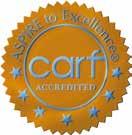

We offer:
• An expansive Inpatient Rehabilitation Program
A spinal cord system of care, brain injury and pediatric specialty programs that have received CARF specialty recognition
A team of brain injury board-certified pediatric physiatrists
– Comprehensive care for young patients from birth to age 21
– Therapy seven days a week
– 28 private patient rooms
• A Day Rehabilitation Program to assist patients during recovery
• Technology-assisted therapy through our Center for Advanced Technology and Robotic Rehabilitation
• A full-service hospital with emergency services
Learn more or make a referral:
404-785-2274
choa.org/rehab

Kathleen T. Bechtold, PhD, ABPP is a clinical psychologist who is board certified in clinical neuropsychology and rehabilitation psychology and specializes in the assessment and treatment of individuals with brain injury. She is an Associate Professor within the Department of Physical Medicine and Rehabilitation at Johns Hopkins University School of Medicine and has been an active researcher for the past twenty years with over 50 publications focusing on recovery and adaptation to brain injury.
1. Shontz FC, Fink SL. The significance of patient-staff rapport in the rehabilitation of individuals with chronic physical illness. J Consult Psychol. 1957;21(4):327-34. doi: 10.1037/ h0046850
2. Wright B. Physical Disability: A Psychological Approach. New York, NY: Harper & Row Publishers; 1960.
3. Mosqueda LA. Assessment of rehabilitation potential. Clin Geriatr Med. 1993;9(4):689-703.
4. Lee KM, Kim YS. The significance of motivation for rehabilitation in stroke patients. Journal of Korean Acad Rehabil Med. 2003;27(3):309-13. doi: 10.1136/ bmj.321.7268.1051
5. Ozer MN. Patient participation in the management of stroke rehabilitation. Topics in Stroke Rehabilitation. 1999;6(1):43-59.
6. Lequerica AH, Kortte K. Therapeutic engagement: a proposed model of engagement in medical rehabilitation. Am J Phys Med Rehabil. 2010;89(5):415-422. doi:10.1097/ PHM.0B013E3181D8CEB2
The process of rehabilitation after brain injury is complex and multifaceted and sometimes confusing and overwhelming as the person with the brain injury and his/her/their family try to navigate in an unknown world. There is a multifarious interplay of factors that influence how well a person benefits from rehabilitation with burgeoning evidence that maximization of rehabilitation is related to the level of patient engagement in the process. What leads an individual to engage and benefit from rehabilitation interventions? Such process-oriented questions have helped rehabilitation professionals to peer inside the black box of interventions to better understand what factors may contribute to success.
For decades, rehabilitationists have been interested in what process variables are important for understanding the reasons some rehabilitation patients participate and benefit whereas others do not. As early as the 1950’s there was examination of “communicative rapport” between patients and rehabilitation therapists (occupational therapists and physical therapists) for participation in intensive treatment1. Then in 1960, Beatrice Wright’s2 seminal text stressed that full engagement in the rehabilitation process was reliant upon the involvement of the patient in the decision-making and planning process. Interest in such process variables has continued over time with the main goal of identifying elements that facilitate or hinder participation in rehabilitation in order to adjust treatment protocols to promote positive outcomes. Understanding the role of self-efficacy and outcome expectancies3, motivation level4, and the patient’s knowledge and investment5 have illuminated the factors that play a role in patient’s following the instructions, participating in interventions, and ultimately benefitting from rehabilitation interventions. Building off these foundational elements, my colleague, Anthony Lequerica and I developed a definition and model of therapeutic engagement with the goal of facilitating a more organized, structured approach to research of the rehabilitation process6. In this edition of the Brain Injury Professional, Drs. Lequerica and Williams summarize that research and describe the evolution of the definition and model of engagement over the past decade to help to understand the role that both the patient and the clinician have in the level of engagement. They identify potential barriers to engagement in the rehabilitation process as well as considerations for facilitating engagement within that process.
This knowledge and theory are beginning to be applied to brain injury populations. In this edition of the Brain Injury Professional, the understanding engagement after brain injury is discussed from the perspective of four brain injury populations, military/Veterans, children, patients with psychiatric symptoms, and patients with challenging behaviors. Drs. Chopin, Williamson, and Hegie summarize some of the unique injury characteristics as well as cultural aspects for active duty military personnel and Veterans that may interact with engagement process and offer practical solutions for clinicians to consider. When working with pediatric populations, Drs. Locascio and Carney stress the importance of relationship building with the key “personnel” in the child’s life. Facilitating full engagement of the child during the brain injury care process is contingent upon brain injury professionals engaging in close and effective partnerships with families and academic systems.
Working with patients who have challenging behaviors or symptoms can challenge the best brain injury professionals. Engagement with patients who exhibit such behaviors or symptoms may be difficult to maintain, particularly when our understanding of those behaviors and symptoms may be more limited. To help with our understanding, Dr. Roy highlights how psychiatric symptoms can interfere with the recovery and rehabilitation process. She advises for close, collaborative teamwork with psychiatric clinicians to reduce those symptoms and offers an example of a more comprehensive approach to psychiatric care after brain injury when those symptoms dominate the clinical picture. Drs. Moltan and Keatley and Ms. Smith take head on the behaviors and contextual factors that can hinder engagement, exploring three brain injury populations that clinicians often describe as challenging: people with limited insight into their deficits, people with a functional or anxiety-related component to their cognitive impairment, and people with work-related injuries pursuing insurance compensation. They highlight how engagement is a bidirectional process and they offer strategies to promote this collaborative process even when faced with the most challenging behaviors.
Finally, to further bolster all our skills for promoting a healthy bi-directional process of engagement with our patients, Dr. Schechter and Ms. Mascarenas highlight the power of communication skills. They review the skillset, strongly rooted in Motivational Interviewing, that help clinicians to create true partnership with patients who have brain injuries in order to build trusting therapeutic alliances, support goal setting, and maximize the success of the rehabilitation process.
Although engagement level does not explain all the mysteries in the black box of rehabilitation, it does offer some viable paths for rehabilitation professionals to positively impact the process. By understanding that engagement is a bi-directional process that is reliant upon a partnership between the brain injury professional and the patient, as well as the key “personnel” in that person’s life, a clearer path is laid that leads to the best outcomes possible. There are skills and approaches the brain injury professional can apply that can breakdown the barriers to engagement and facilitate the overall rehabilitation process for the patient with brain injury.
 Anthony H. Lequerica, PhD • Michael Williams, PhD Irene Ward, DPT
Anthony H. Lequerica, PhD • Michael Williams, PhD Irene Ward, DPT
During acute hospitalization after brain injury, individuals receive critical, life-saving care aimed at maximizing health. Once medically stable, patients may be transferred to a rehabilitation facility where there is a greater focus on functional gains to maximize independence and prepare patients for community reintegration. The rehabilitation setting typically requires greater effort and volition on the part of the brain injury survivor as they progress through intensive rehabilitation therapies that may involve physical therapy, occupational therapy, and speech-language pathology, therapeutic recreation, rehabilitation psychology and neuropsychology services, and other therapeutic interventions delivered by the rehabilitation staff. With lengths of stay becoming shorter over the years, therapeutic engagement is an important consideration to maximize the patient’s ability to benefit from services during their rehabilitation stay. Engagement can continue to hold prominence as individuals transition to outpatient therapies or other rehabilitation programs in the community. In this article, we will review some of the prior research regarding barriers and facilitators of engagement and present an updated conceptual model that may provide a useful visual reference for understanding engagement as a phenomenon within the context of brain injury rehabilitation.
Engagement in rehabilitation has been defined previously as a “deliberate effort and commitment to working toward the goals of rehabilitation interventions, typically demonstrated through active, effortful participation in therapies and cooperation with treatment providers” (p.416)1. Therapeutic engagement in rehabilitation has been demonstrated to be an important predictor of functional outcomes, with poorer engagement found to be associated with lower functional gains and longer length of stay 2,3

Presented here is an updated model (see Figure 1) from one that was previously published 1. In some ways, this model has been simplified.
However, some contributing factors have been added for consideration as contextual issues that can influence various elements in the model. Some of these issues are affected by brain injury sequelae (i.e., post-traumatic amnesia, cognitive deficits, disinhibition, agitation, emotional distress, and pain) that can pose barriers to engagement in rehabilitation and negatively influence outcomes.
The duration of post-traumatic amnesia, or the acute period of confusion following a traumatic brain injury is an indicator of injury severity that has been inversely linked to therapy engagement 2,4 Disinhibition and agitated behaviors that are often observed during the early phase of recovery have also been shown to be associated with engagement in rehabilitation, and an indirect effect of agitation on rehabilitation progress has been demonstrated with engagement as the mediator 5 .
Even after individuals emerge from the acute period of confusion, residual cognitive deficits can pose barriers to engagement. Williams and colleagues (2021) demonstrated positive relationships
Even after individuals emerge from the acute period of confusion, residual cognitive deficits can pose barriers to engagement. Williams and colleagues (2021) demonstrated positive relationships between engagement and various cognitive domains6. Notably, executive functioning, delayed memory, and processing speed had the strongest bivariate relationships with therapy engagement.
Executive functioning is a prominent cognitive domain with respect to engagement as it captures self-regulatory behaviors and cognitive abilities. Relatedly, impaired self-awareness (or awareness of deficits) is an important factor in recovery affecting therapeutic engagement. Toglia & Kirk (2000) comprehensively detailed awareness of deficits after TBI, which highlighted the metacognitive/ executive functioning aspects of self-awareness 7 .
Barriers Possible Consequences Considerations
Impaired Awareness
Agitation, Disinhibition
Attention Impairment
Not understanding the need for treatment
Behaviors that may be disruptive, violent, or otherwise counterproductive
High distractibility, lack of focus on tasks
Contextualized activities with education to draw a direct connection between therapy activities and real-world goals relevant to the patient.
Prompting, redirection, modeling calm behavior, treatment sessions conducted in a low stimulation environment, consultation with other disciplines for behavior management (Psychology/Physiatry/Psychiatry/Neurology)
Environmental modifications, reducing light, glare, commotion, connecting therapy activities to real-world goals, setting a time goal for maintaining attention on a therapeutic activity (e.g., let's get to 10 minutes this time).
Reduced Arousal
Low energy, motivation, or capacity to initiate or sustain participation.
Physician involvement to identify causes (poor sleep quality, medication side-effects, disorders of consciousness) and potential treatments to promote alertness. Use positioning (being upright when possible), schedule shorter therapy sessions with breaks in between. Night nurses to monitor sleep or create environment for restful sleep, sleep specialist consultation as indicated
Reduced English Proficiency
Difficulty understanding task instructions
Access to interpreter services and training in the effective use of interpreters to achieve goals of treatment delivery, use visual cues and demonstration
Diverse Cultural Practices or Beliefs
Depression, Adjustment Disorders, Denial
High level of participation in treatment and decisions regarding treatment options may be a foreign concept.
Low motivation, reduced energy. Hopelessness can impede a focus toward future gains / goal-setting
Culturally humble approaches respectful of individual values (scheduling therapies outside of religious observance) paired with education. Family training or trusted community members (clergy, healers) may help bridge gaps in understanding and world view regarding healing and recovery.
Pain or Fear of Pain
Low Education or Health Literacy
Restrict voluntary mobility/range of motion
Difficulty understanding rationale for therapies or mechanism of action
Poor follow-through, or difficulty remembering to follow home exercise recommendations
Pain management through physician and psychologist for nonpharmacological strategies. Therapist should consider medication schedules when scheduling therapy and use therapeutic treatments and modalities to address pain
Education to make direct connections between therapy activities and patient goals. Introducing the concept of evidence-based interventions and reliance on research demonstrating effectiveness.
Cognitive rehabilitation approaches with compensatory strategies, (i.e., external memory aids, smart phone reminders, establishing a routine or schedule) or family education to reinforce adherence in the home.
Arnould and colleagues (2016) expanded the conceptual understanding of awareness deficits to include other problematic behavior changes (i.e., impulsivity and apathy) while maintaining connection to executive control and adding neuroanatomical correlates pertinent for individuals after brain injury 8. Impaired self-awareness is likely to affect the perceived need depicted in the conceptual model. However, even when awareness of deficits is not impaired, it may not always be intuitive how therapy activities will be of benefit. Not understanding how therapeutic activities will be beneficial has been cited as a barrier to rehabilitation in exercise-based interventions 9. Shared decision making (SDM) is a dynamic process that “involves patient engagement through patient education, which arms the patients with the necessary knowledge needed to make informed decisions regarding their health” or potential benefits to treatment 10 .
Rehabilitation therapists may need to employ creative ways such as the use of decision aids or include patient’s families to explain the evidence to patients with limited health literacy or cognitive capacity 10. Rehabilitation therapists working with individuals with brain injury reported frequently tailoring their therapy tasks to be meaningful to patients and in line with their goals in order to enhance engagement 11. Therapy activities that are decontextualized or removed from a real-world context, may require therapists to take extra time to help patients understand the connection between a therapeutic exercise and the anticipated benefit to everyday functioning. In addition to executive dysfunction, poor memory functioning can present as lack of follow through with unsupervised, independent practice. The bivariate relationship between processing speed and therapy engagement found in previous research6 may reflect an overarching attentional component whereby a lack of engagement may arise from high distractibility or reduced arousal.

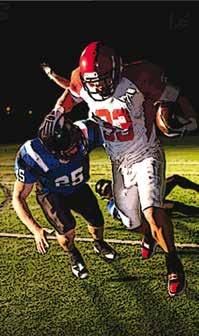


In addition to pharmacological interventions, modification to the therapy environment can play an important role in minimizing distraction or creating a therapy space tailored to the needs of the brain injury survivor. See Table 1 for barriers to engagement in the recovery and rehabilitation process as well as considerations for addressing these barriers.
Emotional status is connected to engagement and requires careful consideration. Apathy is inversely related to therapy engagement6,12. However, the cognitive drivers for low engagement could also affect level of apathy in other life areas. Individuals with brain injury may have a complex combination of anosognosia (lack of awareness of deficits as described earlier) and denial (lack of acceptance or acknowledgement), the latter of which represents a psychological coping mechanism 13,14. Denial of illness is an important predictor of engagement 15. A rehabilitation psychologist is often charged with assisting rehabilitation patients as they begin the process of adjustment to disability. As awareness of deficits increases, emotional distress may also increase. Findings have been mixed with regard to the relationship between rehabilitation engagement and self-reported psychological symptoms of depression and anxiety. Although Ramanathan-Elion and colleagues (2016) found an inverse bivariate relationship, depression was not a relevant predictor of engagement in the full model controlling for other facilitators and barriers 15. Individual differences in the manifestation of depressive symptoms is likely an important consideration as common concomitants of depression such as apathy and reduced motivation have been shown to be associated with engagement 12,16 Further study is needed in this area regarding potential self-referent cognitions regarding self-esteem and adjustment to disability that may affect the perceived self-efficacy factors in the proposed model of engagement.
General anxiety was not related to engagement in a study by Williams and colleagues 6 although pain-related anxiety was inversely linked with level of therapy engagement in the same study sample 17. The fear-avoidance model of pain suggests a person will avoid activities that cause pain, which can include physical rehabilitation activities 18. Moderate to large associations between pain-related fear (trigger for avoidance) and disability has been demonstrated for people with acute or chronic pain 19
Physical pain may hamper engagement in rehabilitation activities by limiting range of motion or task persistence in the moment. Managing pain through pharmacological and non-pharmacological means should be included in a comprehensive plan that includes addressing any associated anticipatory pain-related anxiety that may interfere with rehabilitation therapies. The conceptual model component of perceived risk may include a fear of pain or discomfort as well as a fear of personal injury resulting from active participation in therapy exercises. Other contextual factors in the model such as trust in the therapist can play an important role in rehabilitation engagement on a number of levels such as minimizing the fear associated with perceived risks and providing a general openness to cooperation.
Rehabilitation therapists often walk a fine line between challenging individuals toward advancement, while not overwhelming them, and also supporting a sense of self-efficacy even in the face of perceived failures by providing encouragement and validation.
In the model, engagement is shown to occur when effort is applied which may be affected by one’s capacity to initiate. Once the patient is engaged in the therapeutic activity, the ongoing analysis of experience may lead to a reassessment of the outcome expectancies which will persist as long as there is energy to participate, the experience is tolerated, and the goal has not yet been achieved. Individual differences may be observed with regard to the degree of importance one places on each of the factors depicted in the model. Rehabilitation therapists often encounter a wide variety of individuals with brain injury sequelae that may differentially affect the perceptions and outcome expectancies. For some individuals with greater cognitive impairment, ability to follow commands or behavioral disturbance may play a greater role in engagement. Another important consideration is that culturally and linguistically diverse individuals may have different ideas and values regarding health care, independence, and personal control that can affect motivation to participate 20,21. For example, the concept of active participation in one’s own treatment, while an important ingredient in the rehabilitation setting, may be a foreign concept to many individuals 22. Culturally humble approaches within a patientcentered framework are important as a step toward minimizing racial/ethnic disparities in functional outcomes.
In the original engagement model proposed by Lequerica and Kortte (2010), engagement was described as a complex concept that involved one’s interaction with their environment1. This concept of engagement as a process was reflected in review by Bright, Kayes, Worrall & McPherson (2015) which concluded that engagement is a multi-dimensional construct, comprising both a co-constructed process and a patient state 23. This conceptualization highlights the therapeutic dyad where the patient and therapist both play a role in cultivating a therapeutic relationship where engagement can be maximized. While the cognitive process model presented here is more patient-centered, further research is needed within the context of brain injury rehabilitation to examine the dynamic nature of the dyadic interaction and develop tailored interventions that can improve rehabilitation outcomes. To encourage ongoing research and consideration for clinical use, a listing of some engagement measures is provided in Table 2.
1. Lequerica AH, Kortte K. Therapeutic engagement: a proposed model of engagement in medical rehabilitation. Am J Phys Med Rehabil. 2010;89(5):415-422. doi:10.1097/PHM.0B013E3181D8CEB2
2. Lequerica AH, Rapport LJ, Whitman RD, et al. Psychometric properties of the rehabilitation therapy engagement scale when used among individuals with acquired brain injury. Rehabil Psychol 2006;51(4):331-337. doi:10.1037/0090-5550.51.4.331
3. Lenze EJ, Munin MC, Quear T, et al. Significance of poor patient participation in physical and occupational therapy for functional outcome and length of stay. 2004;85(10):1599-1601.
4. Seel RT, Corrigan JD, Dijkers MP, et al. Patient Effort in Traumatic Brain Injury Inpatient Rehabilitation: Course and Associations With Age, Brain Injury Severity, and Time Postinjury. Arch Phys Med Rehabil. 2015;96(8 Suppl):27.
5. Lequerica AH, Rapport LJ, Loeher K, Axelrod BN, Vangel SJ, Hanks RA. Agitation in acquired brain injury: Impact on acute rehabilitation therapies. J Head Trauma Rehabil. 2007;22(3):177-183. doi:10.1097/01. HTR.0000271118.96780.BC
6. Williams MW, Rapport LJ, Hanks RA, Parker HA. Engagement in rehabilitation therapy and functional outcomes among individuals with acquired brain injuries. Disabil Rehabil. 2021;43(1):33-41. doi:10.1080/0 9638288.2019.1613682
7. Toglia J, Kirk U. Understanding awareness deficits following brain injury. NeuroRehabilitation 2000;15(1):57-70. doi:10.3233/NRE-2000-15104
8. Arnould A, Dromer E, Rochat L, Van der Linden M, Azouvi P. Neurobehavioral and self-awareness changes after traumatic brain injury: Towards new multidimensional approaches. Ann Phys Rehabil Med 2016;59(1):18-22. doi:10.1016/J.REHAB.2015.09.002
9. Santuzzi CH, Liberato FMG, Morau SAC, de Oliveira NFF, Nascimento LR. Adherence and barriers to general and respiratory exercises in cystic fibrosis. Pediatr Pulmonol. 2020;55(10):2646-2652. doi:10.1002/ PPUL.24912
10. Smith MA. The Role of Shared Decision Making in Patient-Centered Care and Orthopaedics. Orthop Nurs. 2016;35(3):144-149. doi:10.1097/NOR.0000000000000243
11. Lequerica AH, Donnell CS, Tate DG. Patient engagement in rehabilitation therapy: Physical and occupational therapist impressions. Disabil Rehabil. 2009;31(9):753-760. doi:10.1080/09638280802309095
12. Kusec A, DeMatteo C, Velikonja D, Harris JE. Psychometric properties of measures of motivation and engagement after acquired brain injury. Rehabil Psychol. 2018;63(1):92-103. doi:10.1037/REP0000186
13. Kortte KB, Wegener ST, Chwalisz K. Anosognosia and denial: Their relationship to coping and depression in acquired brain injury. Rehabil Psychol. 2003;48(3):131-136. doi:10.1037/0090-5550.48.3.131
14. Medley AR, Powell T. Motivational Interviewing to promote self-awareness and engagement in rehabilitation following acquired brain injury: A conceptual review. Neuropsychol Rehabil. 2010;20(4):481508. doi:10.1080/09602010903529610
15. Ramanathan-Elion DM, McWhorter JW, Wegener ST, Bechtold KT. The role of psychological facilitators and barriers to therapeutic engagement in acute, inpatient rehabilitation. Rehabil Psychol. 2016;61(3):277287.
16. Kusec A, Velikonja D, DeMatteo C, Harris JE. Motivation in rehabilitation and acquired brain injury: can theory help us understand it? Disabil Rehabil. 2018:1-7. doi:10.1080/09638288.2018.1467504
17. Williams MW, Rapport LJ, Sander AM, Parker HA. Pain anxiety and rehabilitation outcomes after acquired brain injury. Brain Inj. 2021;35(1):32-40. doi:10.1080/02699052.2020.1859614
18. Vlaeyen JWS, Linton SJ. Fear-avoidance and its consequences in chronic musculoskeletal pain: a state of the art. Pain. 2000;85(3):317-332. doi:10.1016/S0304-3959(99)00242-0
19. Zale EL, Lange KL, Fields SA, Ditre JW. The relation between pain-related fear and disability: A metaanalysis. J Pain. 2013;14(10):1019. doi:10.1016/J.JPAIN.2013.05.005
20. Saltapidas H, Ponsford J. The influence of cultural background on motivation for and participation in rehabilitation and outcome following traumatic brain injury. J Head Trauma Rehabil. 2007;22(2):132-139. doi:10.1097/01.HTR.0000265101.75177.8D
21. Ponsford J, Downing M, Pechlivanidis H. The impact of cultural background on outcome following traumatic brain injury. Neuropsychol Rehabil. 2020;30(1):85-100. doi:10.1080/09602011.2018.1453367
22. Lequerica A, Krch D. Issues of cultural diversity in acquired brain injury (ABI) rehabilitation. NeuroRehabilitation. 2014;34(4):645-653. doi:10.3233/NRE-141079
23. Bright FAS, Kayes NM, Worrall L, McPherson KM. A conceptual review of engagement in healthcare and rehabilitation. Disabil Rehabil. 2015;37(8):643-654. doi:10.3109/09638288.2014.933899
24. Oddy M, Cattran C, Wood R. The development of a measure of motivational changes following acquired brain injury. J Clin Exp Neuropsychol. 2008;30(5):568-575. doi:10.1080/13803390701555598
25. Kortte KB, Falk LD, Castillo RC, Johnson-Greene D, Wegener ST. The Hopkins Rehabilitation Engagement Rating Scale: Development and Psychometric Properties. Arch Phys Med Rehabil. 2007;88(7):877-884. doi:10.1016/j.apmr.2007.03.030
26. Mayhew E, Beresford B, Laver-Fawcett A, et al. The Hopkins Rehabilitation Engagement Rating ScaleReablement Version (HRERS-RV): Development and psychometric properties. Health Soc Care Community 2019;27(3):777-787. doi:10.1111/HSC.12696
27. Chervinsky AB, Ommaya AK, Dejonge M, Spector J, Schwab K, Salazar AM. Motivation for Traumatic Brain Injury Rehabilitation Questionnaire (MOT-Q): Reliability, Factor Analysis, and Relationship to MMPI-2 Variables. Arch Clin Neuropsychol. 1998;13(5):433-446. doi:10.1016/S0887-6177(97)00016-4
28. Yoshida T, Otaka Y, Kitamura S, et al. Development and validation of new evaluation scale for measuring stroke patients’ motivation for rehabilitation in rehabilitation wards. PLoS One. 2022;17(3 March). doi:10.1371/journal.pone.0265214
29. Wu TY, Lien BYH, Lequerica AH, Lu WS, Hsieh CL. Development and validation of the occupational therapy engagement scale for patients with stroke. Occup Ther Int. 2019;2019. doi:10.1155/2019/3164254
30. Lenze EJ, Munin MC, Quear T, et al. The Pittsburgh Rehabilitation Participation Scale: reliability and validity of a clinician-rated measure of participation in acute rehabilitation. Arch Phys Med Rehabil. 2004;85(3):380-384. doi:10.1016/J.APMR.2003.06.001
Anthony H. Lequerica, PhD, is a Senior Research Scientist at Kessler Foundation’s Center for TBI Research and a Research Associate Professor at Rutgers – New Jersey Medical School in the Department of Physical Medicine and Rehabilitation. As Director of the Brain and Behavioral Outcomes Lab, his research focuses on cultural and sociodemographic factors affecting brain injury rehabilitation outcomes. He is Co-Chair of the Inclusion, Diversity, Equity, and Accessibility Special Interest Group within the Traumatic Brain Injury Model Systems sponsored by the National Institute on Disability, Independent Living, and Rehabilitation Research. He is a Staff Neuropsychologist at Kessler Institute for Rehabilitation where he provides neuropsychological services to Spanish-speakers with a variety of neurological conditions. He has over 50 peer-reviewed publications and has given numerous presentations across the U.S. and abroad to researchers, health care professionals, and individuals with brain injury and their families.
Michael W. Williams, PhD, is an Assistant Professor in the Department of Psychology at the University of Houston. As a faculty member in the doctoral clinical psychology program, he mentors graduate students in research. He leads the Measurement and Intervention for Neuropsychological Disorders (MIND) lab, which focuses on improving patient centered outcomes for individuals with a brain injury. His research examines neuropsychological characteristics (e.g., cognition, mood, pain) that are associated with long-term functional outcomes (e.g., independence, return to work, etc.) to identify novel targets of intervention and to develop tailored interventions for optimizing medical rehabilitation and functional recovery. His research is actively funded by the Brain Injury Association of America as well as the National Institute on Disability, Independent Living, and Rehabilitation Research. He is a licensed psychologist and serves on the item writing committee for the Association of State and Provincial Psychology Boards to develop questions for the Examination in Professional Practice of Psychology (EPPP) Part 1.
Irene Gorzelany Ward, PT, DPT, is board certified specialist in Neurologic Physical Therapy since 2006 with 21 years of clinical experience in working with adults with acquired brain injury. Irene engages in clinical research through her current role as the research coordinator for the Brain Injury Program at the Kessler Institute for Rehabilitation. She is the Principal Investigator for a Knowledge Translation Project involving High Intensity Gait Training in the Brain Injury Program. Irene is an adjunct instructor on evidence based practice techniques for the Physical Therapy Program at Seton Hall University and a Clinical Assistant Professor for Rutgers- New Jersey Medical School. Irene is the Director of Knowledge Synthesis on the Board of Directors for the Academy of Neurologic Physical Therapy of the American Physical Therapy Association.
Active-duty (AD) military personnel and veterans have unique characteristics with a distinct shared culture that can both advance and impede engagement in rehabilitation. Although rehabilitation professionals approach patients as individuals, there are commonalities among AD and veterans that are germane to engagement in the rehabilitation process.

Combat operations over the past two decades have yielded a higher incidence of injury from explosions, including Improvised Explosive Devices (IEDs). Polytrauma injuries present multifaceted challenges and often require aggressive pain management. Concurrently patients may be treated for severe TBI, thoracic, and abdominal visceral injuries. Recovery from each category of injury may proceed at different rates. While patients require aggressive pain polypharmacy early in their care, complex regimens may affect alertness and engagement. Potent narcotic medications can induce complications including depression, psychosis, and delirium. After medical stabilization, the polytrauma clinical triad1 of chronic pain, PTSD, and persistent post-concussive symptoms may impact participation in rehabilitation as well as rapport.
In complex trauma patients, any number of medical or psychosocial factors may affect engagement. The clinical pathways followed by one discipline may significantly impact care by another discipline. Effective inter-and transdisciplinary care requires communication
and collaboration as parallel processes unfold. See Table 1 for a list of potential barriers to engagement and approaches and considerations that will assist in reducing those barriers.
Approximately 80% of the nearly half a million TBIs sustained by service members since 2000 have been mild2. Some service members may under-report symptoms to avoid being taken out of the fight. However, mTBI can cause changes in mood, cognition, and sleep, as well as headaches and vestibular dysfunction, all of which can impede engagement. Moreover, injuries can be cumulative. Universal screening for mTBI and common psychiatric comorbidities alerts the team to potential barriers to recovery and provides an opportunity for timely treatment to maximize engagement. Combat-injured service members have higher incidence rates for PTSD, depression, and anxiety when compared to uninjured service members.3 Obstructive sleep apnea (OSA) and insomnia diagnoses are common—and increasing—in military populations.4 CPAP treatment and/or behavioral medicine interventions for insomnia may be indicated to support patient ability to fully participate.
Changes in social cognition are particularly challenging barriers in a rehabilitation setting.
Patients may be impulsive, socially inappropriate, or lack awareness. Leveraging the expertise of the treatment team helps determine the etiology of the behavior and an appropriate treatment plan. For example, neuropsychological assessment defines patterns of cognitive impairment while neuropsychiatric evaluation can identify causes of mood/behavior disturbances including delirium, iatrogenic (pharmacotherapy), partial seizures, or affective syndromes. Input from rehabilitation psychology, speech pathology, occupational therapy, and others informs a patient-specific plan for behavior management and environmental modification. Involving family ensures consistency and carryover of strategies to the home and community.
Recognizing that the military has its own culture is critical to enhancing engagement.5 Like any culture, there are degrees of acculturation. Some considerations include time in service and military role (e.g., intelligence, infantry, specialized duty). The impact of time in service is most pronounced at the extremes. Those early in service (and more recently out of stressful military training) may be more compliant but also more fearful, while someone with years of service may be more accustomed to giving orders, and thus may be seen as a “demanding” patient. These issues, as well as discharge status, degree of identification as a service member, vocational, and family issues are also relevant to veterans.
Injured AD personnel follow one of two pathways: Recover/return to duty or mandated retirement.
Those injured in combat often feel guilty for leaving the theatre and may minimize impairments in order to return.
One strategy for reframing guilt is to characterize rehabilitation as “the mission” to promote a sense of duty, responsibility, and drive. This applies both to AD and veterans, who often retain their sense of duty and responsibility.
Patients transitioning out of military service due to injury may struggle with the unexpected reformatting of their life trajectory and loss of personal identity.
Polytrauma injuries
Medication side effects
(sedation/mood/cognition/behavior)
Interdisciplinary collaboration
Cotreatment
Interdisciplinary communication
Physician screen of medication list
Avoid psychoactive agents
Close monitoring
Holistic/non-pharmacological pain management
Minimization of injury
Comorbid mental health conditions; stigma
Trust in civilian providers
Frame rehabilitation as the “mission”
Universal behavioral health screening
Offer evidence-based treatment
Chronological life history
Provider commitment to understanding military culture, rank system, mission of patient’s MOS
Use military terms: “bunk” for bed, “mess” for cafeteria, etc.
Cognitive impairments
Changes in social cognition
Missed mTBI
Poor sleep
Career ending injury
Neuropsychological assessment
EEG to rule out diffuse slowing or partial seizures
Neuropsychology/Neuropsychiatry evaluation
Transdisciplinary approach to behavioral strategies
Screen all trauma patients for traumatic brain injury
Sleep medicine consultation to evaluate for OSA & treat if indicated
Sleep hygiene
CBT-Insomnia (CBT-I)
Family and community support
Vocational rehabilitation
Behavioral health support
Early collaboration with home VAMC
Approximately 80% of the nearly half a million TBIs sustained by service members since 2000 have been mild.
Acute care
Patients may be confused and disoriented
Patient may exhibit both rational and irrational fears (e.g., they are violating the law by being in the hospital; they are currently a POW)
Many military members are comfortable with routine and daily expectations.
• Use consistent language
• Use military lingo (e.g., “you are not away without leave (AWOL); command knows where you are”)
• Write down information where it is visible
• Re-orient patients and offer continued reassurance/education
• Implement environmental modification to encourage regular sleep/wake cycles and return to routine6
• Frame daily schedules as a duty roster
• Encourage patients to track progress
• Offer reassurance that therapy classes are current “duties”
• Introduce hygiene/grooming standards to foster a sense of familiarity
• Use clear and tangible references (e.g., red to green light for stimulation levels, nervous system is like a car with an accelerator and a break)
• Frame intervention strategies with familiar terms (e.g., diaphragmatic breathing as “marksman breathing”)
• Ensure consistent information is shared with family and command
• Military leadership will expect updates. Know the limits of confidentiality, and when unsure consult. Be mindful of unique access to records (e.g., military case managers can access shared VA medical records); provide informed consent.
• Prior to discharge review safety information including securing weapons and vehicle keys
Early involvement with the VA can streamline services and provide support during any retirement process.
• Connect individuals with high functioning peers
• Talk candidly about risks/benefits of recovery versus ongoing disability
• Consider referral to VA transitional rehabilitation programs to maximize engagement as rehab fatigue sets in
• Connect with vocational rehabilitation services to set the expectation for future success and generate buy-in
• Connect to evidence-based substance use treatment if applicable
Abrupt ending of a chosen career and altered earnings brings stress and uncertainty. Adjustment to injury can be complicated by depression, anxiety disorders, PTSD, or increased substance use. Universal behavioral health screening reduces stigma and identifies comorbidities which may impede engagement. For patients with self-inflicted injuries, substance use concerns, or psychiatric conditions requiring concurrent treatment, stigma and shame remain potential barriers. Support and guidance should include social (family), administrative (patient advocates, veteran nonprofit organization, peer support), and clinical (behavioral health) resources.
Providers can develop a rehabilitation-specific conceptualization by performing a chronological life history and developing a comprehensive understanding of the patient before addressing current challenges. Although there are commonalities among AD and veteran patients, it is important to recognize the significant heterogeneity both within and between both groups. Civilian providers should have a foundational knowledge of a patient’s rank, occupation (MOS), and time in service. As with any patient, the impact of injury is determined by the individual context—stage of life, education, family status, financial stability, and long-term goals. Following a TBI requiring rehabilitative care, most individuals undergo a Medical Board (MEB) to determine fitness for service.
Even with significant recovery, an individual may be found unfit for service, which can feel like a punishment, contribute to adjustment concerns, and impact motivation. A MEB determines the level of financial benefits received after separation if a service member is determined to be unfit for service. Participating in treatment while awaiting a determination of one’s lifetime of benefits for self and family can create internal tension if it is perceived that the benefits of a less significant recovery would outweigh those of fully engaging in rehabilitation.
Rehabilitation providers are likely familiar with typical barriers to engagement as well as approaches that optimize participation in different settings and populations. Combining that knowledge with an understanding of AD and veteran-specific concerns promotes a culturally-informed, patient-focused intervention strategy at every level of care. See Table 2 for setting-specific considerations for maximizing engagement in rehabilitation with AD personnel and veterans.
Facilitating engagement in rehabilitation is a common theme across most settings and populations.
Transdisciplinary approaches with expert consultation are especially beneficial to addressing the unique injuries sustained by AD patients. Clinicians working with AD and veteran patients build rapport by recognizing the need for cultural competence that applies to all aspects of identity.
Part of enhancing one’s cultural awareness includes understanding the particular benefits of universal screening to detect, treat, and reduce stigma associated with common comorbidities as well as how modifying the language of treatment can enhance engagement and promote better outcomes.
1. Lew HL, Otis JD, Tun C, Kerns RD, Clark ME, Cifu, DX. Prevalence of chronic pain, posttraumatic stress disorder, and persistent postconcussive symptoms in OIF/OEF veterans: Polytrauma clinical triad. J Rehabil Res Dev.. 2009; 46(6).697-702. DOI: 10.1682/jrrd.2009.01.0006
2. Defense Medical Surveillance System. DoD Numbers for Traumatic Brain Injury Worldwide—Totals. Published May 10, 2022. Accessed September 16, 2022. https://health.mil/Military-Health-Topics/Centersof-Excellence/Traumatic-Brain-Injury-Center-of-Excellence/DOD-TBI-Worldwide-Numbers.
3. Walker LE, Watrous J, Poltavskiy E, et al. Longitudinal mental health outcomes of combat-injured service members. Brain Behav. 2021; 11(5), e02088. https://doi.org/10.1002/brb3.2088
4. Moore BA, Tison LM, Palacios JG, et al. Incidence of insomnia and obstructive sleep apnea in active duty United States military service members. Sleep. 2021;44 (7):1-8. https://doi.org/10.1093/sleep/zsab024
5. Armistead-Jehle P, Soble JR, Cooper DB, Belanger HG. Unique aspects of traumatic brain injury in military and veteran populations. Phys Med Rehabil Clin N Am. 2017;28(2):323-337. doi: 10.1016/j.pmr.2016.12.008.
6. Stucky K, Stevenson Jutte J. Critical Care Psychology and Rehabilitation: Principles and Practice. Oxford University Press;2021.


Suzzette M. Chopin, Ph.D, M.B.A., ABPP (RP), is a board certified rehabilitation psychologist at the Central Virginia VA Healthcare System. She works in a residential program for Veterans and Active Duty service members with traumatic and acquired brain injuries providing neuropsychological assessment as well as individual and group interventions. She is also PI on a research grant focused on yoga as an adjunctive treatment for comorbid chronic pain and PTSD. Dr. Chopin serves as the Training Director for the Central Virginia VAMC’s specialty-accredited postdoctoral fellowship in rehabilitation psychology. She is also the Treasurer of the American Board of Rehabilitation Psychology.
David Williamson, MD trained at the Universities of Edinburgh and London in the UK, and at the Rockefeller and Johns Hopkins Universities in the US. He has been working in neuropsychiatry and brain injury medicine for more than 30 years and has directed programs in the federal, state, and private sectors treating complex brain injury patients. He is currently the Director of the Inpatient TBI program and Neuropsychiatry Service Chief at Walter Reed National Military Medical Center. He works with injured active-duty service members and veterans managing changes in mood, cognition, and behavior that impede engagement in rehabilitation.
Alicia Hegie, Psy.D., ABPP(RP) is a rehabilitation neuropsychologist at Providence St. Luke’s Rehabilitation Medical Center. Alicia completed her doctorate in clinical psychology at the University of Denver in 2012. She served as an Active Duty Air Force Officer (most recently at the rank of Major), and was awarded the Meritorious Service Medal. Alicia completed a fellowship in neuropsychology at the Kaiser Foundation for Rehabilitation in 2017, and board certification in rehabilitation psychology in 2019. Alicia currently chairs the center’s ethics committee and leads the BI program, with clinical and research interest in agitation management and role resumption after injury.

Extensive research has demonstrated the importance of the social environment in recovery after pediatric acquired brain injury ABI; 1. In fact, social-environmental factors may have greater impact upon functional outcomes than injury severity 2. While children are inherently involved in a number of systems, their primary social environments are most often comprised of the family and educational system. Accordingly, families and educators play essential roles in the long-term care and rehabilitation of children recovering from ABI. Well-known theoretical models have emphasized the need to deliver intervention and rehabilitation in the context of these environments’ everyday activities, routines, and people 3. Therefore, to facilitate full engagement of the child during the brain injury care process, pediatric brain injury professionals must engage in close and effective partnerships with families and academic systems. Ideally, such relationships should be maintained at least through late adolescence, as professionals working with adolescents after ABI can be essential in guiding services and supports through the transition from childhood into adulthood 4
Unfortunately, growing research highlights significant family stress after pediatric ABI, which can negatively impact engagement and recovery outcomes 5,6. While correlations have historically been demonstrated between parent behaviors and child functioning in psychological and psychiatric populations, this relationship may be intensified in families of a child who has sustained an ABI 1. Severe ABI in childhood can lead to chronic family dysfunction, though some studies suggest that stronger familial function is associated with better outcomes 7. The literature documents a reciprocal and “bi-directional” relationship between long-term child outcome and family adjustment with initial impact of TBI on a child’s behavior negatively affecting family adjustment and problematic family adjustment can lead to difficulties in managing behaviors 8,9. Further, studies have shown that in the months and years after ABI, child behavior and functioning significantly predict parental distress 10 and family burden, while parent interactions also influence the child’s recovery 11
Effective family-based engagement ideally starts with an interdisciplinary assessment of the family’s adjustment to and understanding of the child’s brain injury; these elements can vary significantly based on a variety of family and socio/cultural factors, time since the injury, and injury severity. In assessing family adjustment, a developmental/systems perspective may be particularly helpful 12 to identify family roles, quality of relationships, coping styles, communication, and quality of family life. Domainspecific measures may also be effective in helpful in understanding parental perception and attitudes. An assessment should also include evaluation of the child’s social, emotional and behavioral functioning, with emphasis on any potential changes since the injury.
The family’s understanding of the child’s brain injury, long-term prognosis, and recommendations from brain injury professionals must continually be assessed and monitored 13. Notably, families who report greater understanding of their child’s specific ABI are more likely to follow recovery-related recommendations 14. However, it is also essential to provide information and recommendations in a straightforward and efficient manner, as families can be easily overwhelmed by lengthy, complex medical reports 15 .
Family-centered care (FCC) is a partnership approach to health care services and decision-making, which is based on a strong, collaborative relationship between a family and the health care providers 16
The model has been shown to have particular positive effects on parent and child psychological health 17. Similarly, multiple recent studies have demonstrated strong efficacy in addressing overall behavioral and cognitive functioning among children and adolescents after ABI. Importantly, the most consistent and strongest results have emerged from family-centered problemsolving interventions. These focus broadly on providing problemsolving and skills training to children and their families through systematic psychoeducation and therapy 18. Outcomes of these interventions include improved behavioral regulation and executive function 18, increased child self-management and compliance 19, and overall improvement in functional outcomes 18. Given its efficacy, family-based problem-solving is recommended as a practice standard for families of children and adolescents following ABI 20 and can drastically improve overall family engagement related specifically to their child’s post-injury needs. While most studies have focused on ABI sustained during childhood/adolescence, there is also emerging evidence for effectiveness of such psychosocial interventions in improving family functioning after neonatal brain injury 21
A strong partnership between brain injury providers and educators is also needed to maximize outcomes for children with ABI 22,23 However, there are barriers to overcome when engaging with school systems 24. Among those challenges are communication, education, and system procedural hurdles. Several models exist that can provide guidance to brain injury professionals when engaging with children and their families during the years following ABI and emphasize the priority of establishing early and ongoing communication between the medical and the educational providers 25,26. Parents or guardians should be encouraged to release medical information to the school system immediately following a brain injury. This opens the lines of communication and begins to inform the family of the role the school might play in recovery. Establishing a primary liaison on both the medical and the educational teams can facilitate good flow of information among these two very different systems. Members of both groups need to understand the differences in their systems and procedures while working cooperatively with parents or guardians for the success of the child with ABI.
Engaging with personnel in the school system will likely also mean providing education regarding the sequelae of the ABI and the potential cognitive and behavioral outcomes. School personnel receive little formal training in the consequences of ABI and the potential impact on educational performance 24,27. Conversely, the brain injury professional will also need knowledge of services and procedures that could potentially provide educational supports to the child with ABI. In the US, public school systems are mandated by specific education laws to provide support services for children experiencing academic impact of neurological disorders; however, access, quality, and implementation varies considerably across schools, districts, and states. Brain injury professionals should recognize the extreme variability in service delivery models, which differ significantly throughout the US and globally 28. One of the factors contributing to this variability is that each educational jurisdiction has their own established procedures for eligibility and service provision within the confines of these legislations. These procedures have an accompanying timeline, sometimes delaying needed supports. Knowledge of these procedural hurdles can facilitate timely provision of special education and related services for children with acquired brain injury.
There are few programs in the US that truly engage families, school systems, and healthcare professionals simultaneously. However, Pennsylvania’s BrainSTEPS (Strategies Teaching Educators, Parents, and Students) is an excellent example of a collaborative effort between the Pennsylvania Department of Health, the Brain Injury Association of Pennsylvania (BIAPA), and local school districts. Teams engage directly with schools to provide comprehensive ABI liaison services, training, and consultation. Importantly, teams include trained representatives from a child’s essential systems: medical rehabilitation professionals, educators, and parents 29. In the United Kingdom, similar efforts have recently been underway. In partnership with the Department of Education, the National ABI Education and Learning Syndicate (N-ABLES) was developed to increase educational professionals’ knowledge on ABI and to improve liaison and collaboration between educational and health care professionals 30
Engagement of brain injury professionals with families and their partner professionals in the educational system can help overcome some of the barriers that lead to functional recovery and educational success for children with ABI. In addition to direct involvement with children, families and schools, brain injury professionals must also be aware of, strong advocates for, and leaders in development of national and statewide programs aimed to improve essential collaboration among healthcare, family, and school systems.
Overall, effective engagement with families must include open, collaborative communication among healthcare providers and educators. The brain injury professional is in an ideal position to facilitate, maintain, and continually monitor appropriate engagement in order to holistically maximize the child’s recovery and functioning across all systems and environments.
1. Gerring JP, Wade S. The essential role of psychosocial risk and protective factors in pediatric traumatic brain injury research. J Neurotrauma. Mar 1 2012;29(4):621-8. doi:10.1089/neu.2011.2234
2. Taylor HG, Yeates KO, Wade SL, Drotar D, Stancin T, Minich N. A prospective study of short- and longterm outcomes after traumatic brain injury in children: behavior and achievement. Neuropsychology. Jan 2002;16(1):15-27. doi:10.1037//0894-4105.16.1.15
3. Ylvisaker M, Szekeres SF, Haarbauer-Krupa J. Cognitive rehabilitation: Organization, memory and language Traumatic brain injury rehabilitation: Children and adolescents (Revised Edition). Butterworth-Heinemann; 1998.
4. Letteri AM, Bechtold KT. Transition to Adulthood. In: Locascio G, Slomine B, eds. Cognitive Rehabilitation for Pediatric Neurological Disorders. Cambridge; 2018.
5. Raj SP, Antonini TN, Oberjohn KS, Cassedy A, Makoroff KL, Wade SL. Web-Based Parenting Skills Program for Pediatric Traumatic Brain Injury Reduces Psychological Distress Among Lower-Income Parents. J Head Trauma Rehabil. Sep-Oct 2015;30(5):347-56. doi:10.1097/htr.0000000000000052
6. Wade SL, Walz NC, Carey J, et al. A randomized trial of teen online problem solving for improving executive function deficits following pediatric traumatic brain injury. J Head Trauma Rehabil. Nov-Dec 2010;25(6):40915. doi:10.1097/HTR.0b013e3181fb900d
7. Rashid M, Goez HR, Mabood N, et al. The impact of pediatric traumatic brain injury (TBI) on family functioning: A systematic review. J Pediatr Rehabil Med. 2014;7:241-254. doi:10.3233/PRM-140293
8. Moscato EL, Peugh J, Taylor HG, Stancin T, Kirkwood MW, Wade SL. Bidirectional effects of behavior problems and parenting behaviors following adolescent brain injury. Rehabil Psychol. Aug 2021;66(3):273285. doi:10.1037/rep0000380
9. Wade SL, Taylor HG, Drotar D, Stancin T, Yeates KO, Minich NM. Parent-adolescent interactions after traumatic brain injury: their relationship to family adaptation and adolescent adjustment. J Head Trauma Rehabil. Mar-Apr 2003;18(2):164-76. doi:10.1097/00001199-200303000-00007
10. Hooper L, Williams WH, Sarah EW, Chua KC. Caregiver distress, coping and parenting styles in cases of childhood encephalitis. Neuropsychol Rehabil. Aug-Oct 2007;17(4-5):621-37. doi:10.1080/09602010601137054
11. Aitken ME, McCarthy ML, Slomine BS, et al. Family burden after traumatic brain injury in children. Pediatrics. Jan 2009;123(1):199-206. doi:10.1542/peds.2008-0607
12. Byard K, Fine H, Reed J. Taking a developmental and systemic perspective on neuropsychological rehabilitation with children with brain injury and their families. Clin Child Psychol Psychiatry. Apr 2011;16(2):165-84. doi:10.1177/1359104511403582
13. Lundine JP, Ciccia AH, Koterba C, Guernon A. Factors that Influence Follow-Up Care for Families of Children with Acquired Brain Injury: A Scoping Review. Brain Inj. 2022/03/21 2022;36(4):469-478. doi:10.108 0/02699052.2022.2051741
14. Keenan RP, Lovanio K, Lapidus G, Chenard D, Smith S. Improved Concussion Discharge Instructions in a Pediatric Emergency Department. Adv Emerg Nurs J. 2020;42(1)
15. Cheung LLT, Wakefield CE, Ellis SJ, Mandalis A, Frow E, Cohn RJ. Neuropsychology reports for childhood brain tumor survivors: Implementation of recommendations at home and school. Pediatr Blood Cancer 2014;61(6):1080-1087. doi:https://doi.org/10.1002/pbc.24940
16. Kuo DZ, Houtrow AJ, Arango P, Kuhlthau KA, Simmons JM, Neff JM. Family-centered care: current applications and future directions in pediatric health care. Matern Child Health J. Feb 2012;16(2):297-305. doi:10.1007/s10995-011-0751-7
17. Dunst CJ, Trivette CM. Meta-analytic structural equation modeling of the influences of family-centered care on parent and child psychological health. Int J Pediatr. 2009;2009:576840. doi:10.1155/2009/576840
18. Wade SL, Kaizar EE, Narad M, et al. Online Family Problem-solving Treatment for Pediatric Traumatic Brain Injury. Pediatrics. Dec 2018;142(6)doi:10.1542/peds.2018-0422
19. Wade SL, Michaud L, Brown TM. Putting the pieces together: Preliminary efficacy of a family problemsolving intervention for children with traumatic brain injury. The Journal of Head Trauma Rehabilitation 2006;21(1):57-67. doi:10.1097/00001199-200601000-00006
20. Laatsch L, Dodd J, Brown T, et al. Evidence-based systematic review of cognitive rehabilitation, emotional, and family treatment studies for children with acquired brain injury literature: From 2006 to 2017. Neuropsychol Rehabil. Jan 2019;30(1):130-161. doi:10.1080/09602011.2019.1678490
21. Lamond B, Roberts SD, Miller SP, Wade SL, Williams TS. Psychosocial Intervention Outcomes for Children with Congenital and Neonatal Conditions: Systematic Review. J Pediatr Psychol. Apr 26 2022;doi:10.1093/ jpepsy/jsac038
22. Dettmer J, Ettel D, Glang A, McAvoy K. Building Statewide Infrastructure for Effective Educational Services for Students With TBI: Promising Practices and Recommendations. The Journal of Head Trauma Rehabilitation. 2014;29(3)
23. Glang A, Todis B, Thomas C, Hood D, Bedell G, Cockrell J. Return to school following childhood TBI: Who gets services? NeuroRehabilitation. 02/01 2008;23:477-86. doi:10.3233/NRE-2008-23604
24. Canto AI, Chesire DJ, Buckley VA, Andrews TW, Roehrig AD. Barriers to meeting the needs of students with traumatic brain injury. Educational Psychology in Practice. 2014/01/02 2014;30(1):88-103. doi:10.1080 /02667363.2014.883498
25. Anderson D, Gau JM, Beck L, et al. Management of Return to School Following Brain Injury: An Evaluation Model. Int J Educ Res. 2021;108doi:10.1016/j.ijer.2021.101773
26. Gioia GA. Medical-School Partnership in Guiding Return to School Following Mild Traumatic Brain Injury in Youth. J Child Neurol. 2016/01/01 2014;31(1):93-108. doi:10.1177/0883073814555604
27. Davies SC, Fox EE, Glang A, Ettel D, Thomas C. Traumatic brain injury and teacher training: A gap in educator preparation. Physical Disabilities: Education and Related Services. 2013;32(1)
28. Locascio G, Slomine BS, eds. Cognitive Rehabilitation for Pediatric Neurological Disorders. Cambridge University Press; 2018.
29. Myers RK, Eagan-Brown BL, Conway AT, et al. Examining a Statewide Educational Consulting Program for Pediatric Brain Injury. Clin Pediatr (Phila). Jun 2018;57(6):645-655. doi:10.1177/0009922817732146
30. The United Kingdom ABI Forum. National ABI Learning and Education Syndicate. Accessed November 2, 2022 2022. https://ukabif.org.uk/page/NABLES
Dr. Gianna Locascio completed her doctorate at Rutgers University, internship in Child Clinical/Pediatric Psychology at the University of Miami School of Medicine, and fellowship in Pediatric Neuropsychology at Johns Hopkins University School of Medicine & Kennedy Krieger Institute. She is also a Certified School Psychologist. She is board certified in Clinical Neuropsychology, Pediatric Neuropsychology and Rehabilitation Psychology. She is currently the director of pediatric neuropsychology at NYU Langone Health – Brooklyn, and is a clinical associate professor of Neurology and Rehabilitation Medicine through NYU Grossman School of Medicine. She is actively involved in clinical training, and serves on the Board of Directors for the NY State Association of Neuropsychology.
Joan Carney, EdD, is the Assistant Vice President of Clinical Programs at the Kennedy Krieger Institute and an Assistant Professor, Physical Medicine and Rehabilitation at the Johns Hopkins University School of Medicine. Dr. Carney directs several interdisciplinary rehabilitation and early intervention programs as well as a statewide training grant for school-based personnel. She is a board member of the Brain Injury Association of Maryland and serves on Maryland’s Governor’s Advisory Board for Traumatic Brain Injury. She has experience as a clinical leader in innovative program design and implementation. Her programs focus on school and community integration with specific expertise in brain injury, cerebral palsy, and chronic pain. She has engaged in scholarly work with these populations and has been part of multiple program evaluation and efficacy activities surrounding pediatric constraint induced movement therapy. Dr. Carney is currently site PI for a large multi-site investigation of CIMT with young children.
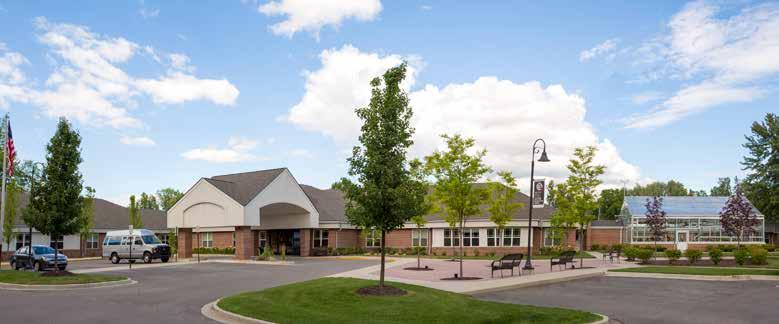
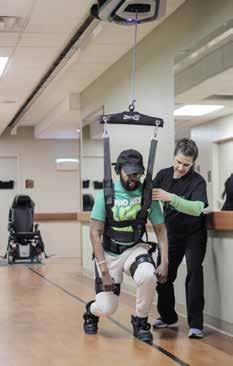

Neuropsychiatric disturbances are the major cause of disability after traumatic brain injury (TBI). These disturbances are not immediately apparent and may present within months to a year after TBI1 . Forty percent of individuals with TBI suffer from two or more psychiatric disorders2. A combination of preinjury (e.g., age, socioeconomic, health history), injury-related (e.g., severity, location, type), and post-injury factors (e.g., treatment, social support, other stressors) are critical in determining post-TBI recovery and psychiatric outcomes within the first few years of injury3. Neuropsychiatric symptoms after TBI can occur any time after injury and are present across all severities of TBI. These disturbances are highly variable and usually represent changes in mood, cognition, and/or behavior4 Depression, anxiety, and post-traumatic stress disorder are the most common mood disturbances seen post-TBI and cognitive impairments may include deficits in attention, executive function, and memory5. Behavioral problems such as agitation, aggression, and disinhibition can also occur post-injury, and often render patients frequently presenting to emergency departments or psychiatrically hospitalized6.
The presence of neuropsychiatric conditions after TBI can impact a patient’s desire and ability to actively engage in care. Despite being offered interventions that are uniquely tailored to that individual in collaboration with their healthcare team, neuropsychiatric symptoms after TBI may present barriers in access, desire, and means to engage in proposed interventions. This can affect 1) the time it takes for a patient to achieve some level of functional recovery, 2) the ability to maximize outcomes and attain personal goals, and 3) improve their subjective experiences of care7. The pervasive nature of post-TBI neuropsychiatric conditions can markedly impair a patient’s level of personalization, access, commitment and therapeutic alliance, which are all components that are required for patient engagement8

Assessing neuropsychiatric pathology after TBI may be accomplished using either a symptom focused or syndrome focused approach. A symptom focused approach describes symptoms of emotional dyscontrol which include affective instability, pathological laughter and crying and irritability, and behavioral dyscontrol which describes agitation and disinhibited behaviors (6). In contrast, a syndrome-focused approach utilizes understanding a constellation of symptoms that exist over a course of time resulting in a chronic and episodic psychiatric disorder. The most common neuropsychiatric syndromes after TBI include cognitive impairment, depression, anxiety disorders, psychotic disorders and apathy9. See Table 1 for a summary of neuropsychiatric syndromes, their prevalence, and core symptoms.
Depression has been well-established to be the most common neuropsychiatric problem after TBI and can result in significant impairment in patient engagement in treatment. Rates of depression after TBI range from 15-33% 10,11. Depression after TBI is often comorbid with anxiety, aggression and substance abuse. Severity of depressive symptoms can impede a patient’s motivation and desire to engage in the rehabilitation activities post-injury12,13. The presence of sad mood, loss of interest, low energy, poor appetite and sleep can all continue to adversely affect a patient’s ability to be motivated to participate in therapy sessions and a confluence of lingering post-concussive symptoms can both exacerbate existing depressive symptoms as well as impact a patient’s physical abilities to engage in certain therapies.


Mania after TBI can render patients psychiatrically hospitalized frequently, thus disrupting their TBI-related care. Anxiety after TBI can impede a patient’s comfort in connecting with their psychiatric care providers and forming trusting alliances. Psychosis after TBI is uncommon, yet auditory hallucinations, and paranoid or persecutory delusions can often lead to poor insight into illness, and patients may become suspicious of their providers or not believe they need post-injury psychiatric interventions. Finally, the syndrome of apathy impairs a patient’s engagement in consistent rehabilitation follow up, and renders the patient to become rapidly non-adherent to outpatient psychiatric and psychotherapy appointments5
General guidelines for pharmacologic treatment of the neuropsychiatric disturbances after TBI include very conservative dosage titration and minimizing polypharmacy to reduce the risk of side effects. Apart from medication management, other interventions such as psychotherapy, neurorehabilitation and psychosocial rehabilitation are also used in the management of neuropsychiatric symptoms in the early TBI period. Psychotherapy typically involves supportive therapy, behavioral therapy and cognitive behavioral therapy whereas psychosocial rehabilitation can involve rehabilitation of vocation, education and building social supports14
A common challenge encountered in the outpatient treatment of neuropsychiatric disturbances after TBI is that psychotropic interventions are often not sufficient, and a multipronged approach is required15. To address this barrier, outpatient programs are now developing multidisciplinary collaborative interventions to target vocational, educational, psychosocial and behavioral rehabilitation in these individuals that can address mood, behavioral problems, and cognitive and functional deficits in a comprehensive and holistic approach16. These models involve intensive outpatient treatment interventions including weekly appointments with a neuropsychiatrist, weekly individual psychotherapy, and multiple group therapy sessions focused on anger management, mindfulness, occupational therapy and psychosocial rehabilitation. By offering a 12-week program that includes three day a week group therapies in the above areas, weekly psychotherapy and medication management appointments, the Johns Hopkins Head Injury Outpatient Enhanced Psychiatric Services (HOPES) program is an example of a model that is structured in this way, with the goal of minimizing disability and maximizing function and productivity in patients with brain injury17
Several patients are often unable to receive their care due to several limitations outside the spectrum of their illness. Barriers that patients encounter to accessing care for their neuropsychiatric symptoms after TBI include physical restrictions, change in ability to drive, living in proximity to specialists, complex medication regimens, and multiple clinical providers and sites to manage. As such, the current move towards telemedicine to help engage patients in care is becoming more widely practiced. As a treatment intervention for post-TBI neuropsychiatric symptoms, direct consultation, care coordination, and psychotherapy through telemedicine have resulted in positive outcomes including decreased depression, decreased physical symptoms, increased follow up, and overall similar patient/provider satisfaction18.
Management of neuropsychiatric symptoms after TBI involves conservative pharmacologic management and multimodal psychosocial and rehabilitation interventions. Consistent, multidisciplinary access to integrated care models bode best for prognosis, and for those patients who have geographic and transportation barriers, telemedicine can be offered as a therapeutic intervention when access to care is limited. Future systems-based exploration of collaborative care in TBI will portend well from more positive prognostic outcomes.
1.National Center for Injury Prevention and Control. Report to Congress on Mild Traumatic Brain Injury in the United States: Steps to Prevent a Serious Public Health Problem. Atlanta, GA: Centers for Disease Control and Prevention; 2003.
2.Corrigan JD, Whiteneck G, Mellick D. Perceived needs following traumatic brain injury. J Head Trauma Rehabil. 2004;19(3):205-216.
3.Kalpakjian CZ, Lam CS, Toussaint LL, Merbitz NK. Describing quality of life and psychosocial outcomes after traumatic brain injury. Am J Phys Med Rehabil. 2004;83(4):255-265.
4.Kim E, Lauterbach EC, Reeve A, et al. Neuropsychiatric complications of traumatic brain injury: a critical review of the literature (a report by the ANPA Committee on Research). J Neuropsychiatry Clin Neurosci 2007;19(2):106-127.
5.Riggio S, Wong M. Neurobehavioral sequelae of traumatic brain injury. Mt Sinai J Med. 2009;76(2):163-172.
6.Arciniegas DB, Wortzel HS. Emotional and behavioral dyscontrol after traumatic brain injury. Psychiatr Clin North Am. 2014;37(1):31-53.
7.Arango-Lasprilla JC, Krch D, Drew A, De Los Reyes Aragon CJ, Stevens LF. Health-related quality of life of individuals with traumatic brain injury in Barranquilla, Colombia. Brain Inj. 2012;26(6):825-833.
8.Higgins T, Larson E, Schnall R. Unraveling the meaning of patient engagement: A concept analysis. Patient Educ Couns. 2017;100(1):30-36.
9.Vaishnavi S, Rao V, Fann JR. Neuropsychiatric problems after traumatic brain injury: unraveling the silent epidemic. Psychosomatics. 2009;50(3):198-205.
10.Jorge RE, Robinson RG, Moser D, Tateno A, Crespo-Facorro B, Arndt S. Major depression following traumatic brain injury. Arch Gen Psychiatry. 2004;61(1):42-50.
11.Bombardier CH, Fann JR, Temkin NR, Esselman PC, Barber J, Dikmen SS. Rates of major depressive disorder and clinical outcomes following traumatic brain injury. JAMA. 2010;303(19):1938-1945.
12.Silver JM, McAllister TW, Arciniegas DB. Depression and cognitive complaints following mild traumatic brain injury. Am J Psychiatry. 2009;166(6):653-661.
13.Rabinowitz AR, Chervoneva I, Hart T, O'Neil-Pirozzi TM, Juengst SB, Hoffman JM. Heterogeneity in Temporal Ordering of Depression and Participation After Traumatic Brain Injury. Arch Phys Med Rehabil 2020;101(11):1973-1979.
14.Potter SD, Brown RG, Fleminger S. Randomised, waiting list controlled trial of cognitive-behavioural therapy for persistent postconcussional symptoms after predominantly mild-moderate traumatic brain injury. J Neurol Neurosurg Psychiatry. 2016;87(10):1075-1083.
15.Consensus conference. Rehabilitation of persons with traumatic brain injury. NIH Consensus Development Panel on Rehabilitation of Persons With Traumatic Brain Injury. JAMA. 1999;282(10):974-98.
16.Ahmed F, Bechtold K, Smith G, Roy D, Everett A, Rao V. Program of Enhanced Psychiatric Services for Patients With Brain Injury and Neuropsychiatric Disturbances: A Proposed Model of Care. J Neuropsychiatry Clin Neurosci. 2016;28(2):147-152.
17.https://www.hopkinsmedicine.org/psychiatry/patient_information/bayview/images/HOPES%20 Brochure_MR%20edits.pdf
18.Fann JR, Bombardier CH, Vannoy S, et al. Telephone and in-person cognitive behavioral therapy for major depression after traumatic brain injury: a randomized controlled trial. J Neurotrauma. 2015;32(1):45-57.
Durga Roy is a neuropsychiatrist and an Associate Professor of Psychiatry and Behavioral Sciences at Johns Hopkins University School of Medicine. She is the Medical Director of the Johns Hopkins Neuropsychiatry and Brain Injury Clinic, and Head Injury Outpatient Psychiatric Day Program. She is board-certified in general adult psychiatry, and consult-liaison psychiatry and behavioral neurology/ neuropsychiatry. Dr. Roy has clinical and research expertise in the diagnosis and management of psychiatric symptoms after traumatic brain injury and has authored numerous peer-reviewed publications focused on neuropsychiatric outcomes after traumatic brain injury. Dr. Roy can be reached at droy4@jhmi.edu.
June
21 – 23 - Occupational Therapy Australia 30th National Conference & Exhibition, June 21 – 23, Cairns, Australia. For more information, visit https://www. otausevents.com.au/otaus2023/cairns.
September
16 – 17 - International Conference on Advancements in Trauma and Brain Injury Management, September 16 -17, Amsterdam, The Netherlands. For more information, visit https://waset.org/ advancements-in-trauma-and-brain-injurymanagement-conference-in-september2023-in-amsterdam.
October
30 – 2 - American Congress of Rehabilitation Medicine, October 30 –November 2, Atlanta, Georgia. For more information, visit www.acrm.org.
November
7. The U.S. Consumer Products Safety Commission found more than 750 deaths and 25,000 hospitalizations in its 10-year study of the dangers of portable electric generators. https://www.cpsc.gov/es/content/briefingpackage-on-the-proposed-rule-safety-standard-forportable-generators
15 – 19 – American Academy of Physical Medicine and Rehabilitation Annual Assembly, November 15-19, 2023, New Orleans, Louisiana. For more information, visit www.aapmr.org.
8. For the current guidelines: http://wedocs.unep. org/bitstream/handle/20.500.11822/8676/Select_ pollutants_guidelines.pdf?sequence=2
March
9. In an April 2017 carbon monoxide poisoning at a hotel in Niles, Michigan, several first responders had to be hospitalized because they were not wearing masks while they treated severely poisoned children. In a recent Detroit poisoning, the first responders did not have carbon monoxide detectors and also might have been poisoned. CO was not determined to be the cause for 20 to 30 minutes.
10. http://www.corboydemetrio.com/news-121.html Source: “This paper was presented at the Proceedings of the 1st Annual Conference on
21 – 24 - 2024 American Occupational Therapists Association Conference and Expo, Mach 21 – 24, Orlando, Florida. For more information, visit www.aota.org.
11. Environmental Toxicology, sponsored by the SysteMed Corporation and held m Fairborn, Ohio on 9, 10th and 11 September 1970.“

May
1– 3 - Canadian Association of Occupational Therapists Conference 2024, May 1 - 3, Halifax, Nova Scotia. For more information, visit https://caot.ca/site/ prof-dev/pd/conference?nav=sidebar&ba nner=3
Gordon Johnson is a leading attorney, advocate and author on brain injury. He is a 1979 cum laude graduate of the University of Wisconsin law school and a journalism grad from Northwestern University. He has authored some of the most read web pages in brain injury. He is the Past Chair of the Traumatic Brain Injury Litigation Group, American Association of Justice. He was appointed by Wisconsin’s Governor to the state’s sub-agency, the TBI Task Force from 2002 – 2005. He is also the author of two novels on brain injury, Crashing Minds and Concussion is Forever.
With over 30 years of experience in the area of head and brain injuries, nationally recognized Stark & Stark attorney Bruce H. Stern devotes himself to obtaining the compensation his injured clients deserve and to providing them with personal guidance to coordinate and promote the healing process.

 H. Stern, Esq.
H. Stern, Esq.
 Ivan Molton, PhD • Eva Keatley, PhD Alissa Smith, MS, CCC-SLP
Ivan Molton, PhD • Eva Keatley, PhD Alissa Smith, MS, CCC-SLP
The primary goals of neurorehabilitation after traumatic brain injury (TBI) are to support and facilitate recovery and to develop accommodative strategies that maximize function and quality of life. While the choice of a particular intervention is important, no therapeutic approach can be effective without full engagement by both patients and providers.1 For some patients with TBI, engagement is threatened by neurobehavioral and contextual factors, requiring an especially intentional and thoughtful approach to maximize participation.
Despite definitions of engagement that emphasize shared medical decision making,2,3 too often engagement becomes shorthand for compliance, or the extent to which the patient’s behavior matches the provider’s recommendations. Patients who accept treatment recommendations are seen as “engaged,” and patients who do not are seen as “challenging.” Engagement thereby becomes a patient-level variable, rather than a negotiated process that requires continual renewal “in accordance with shifting goals, expectations, and emotional needs."4
The problem with the engagement-as-compliance view is that when engagement fails, all efforts focus only on the patient. Moving away from this view requires an awareness that therapeutic engagement after TBI is both an iterative process and a two-way street. It requires providers to respond to a lack of engagement with curiosity rather than judgment, in the spirit of non-defensive, flexible problemsolving, and to consider their own role in the engagement process.
Engagement has a number of preconditions. At the most basic level, a patient must understand and remember what is being asked of them. They must believe that what is being proposed is the right treatment, based on a shared understanding of the diagnosis and target areas. They must believe that the work will translate to improvement in valued life areas, and not just improvements from the perspective of the provider. They must feel they have the resources (financial, emotional, cognitive) to do what is being asked. Finally, they must believe that the benefits of engagement outweigh potential negative consequences, which may be substantial.
In this brief article we will explore these preconditions in three TBI populations that clinicians often describe as challenging to
engage: people with limited insight into their deficits, people with a functional or anxiety-related component to their cognitive impairment, and people with work-related injuries pursuing insurance compensation.
Poor awareness of neuropsychological deficits is a common correlate of moderate to severe TBI,5 particularly for injuries affecting the right hemisphere and cortical midline regions. These patients may see any impairments as overstated or unimportant, creating significant barriers to therapeutic engagement.6 Even when a patient understands what is being asked and feels they have the resources to do it, they are unlikely to see the treatment as correct, important, or worthwhile. They may see no value whatsoever in cognitive remediation and will find assessment tasks frustrating and unnecessary.
Reduced self-awareness after TBI should be conceptualized as an executive functioning deficit involving metacognition. Promoting engagement therefore is more strongly linked to providers and their interpretation of the behavior of the patient. Problems with executive function may be subtle, especially in the context of overt difficulties in memory and language, and may present as personality features. Providers may attribute poor patient self-awareness (and resulting lack of engagement) as lack of motivation, stubbornness, or defensiveness. Providers can easily fall into the trap of seeing these patients as “resistant” to their recommendations, thereby personalizing a lack of engagement, and making it worse. These misinterpretations will contribute to frustration, inflexibility, and a tendency to disengage. Early identification and provider knowledge regarding executive function deficits – including how such deficits can impact self-awareness – are essential. When executive function deficits limit participation, engagement is better served by active problem-solving and flexible compensatory strategies than by the assumption of low motivation or denial.7
Approaches for increasing self-awareness focus on enhancing a patient's ability to internalize awareness and control over their behavior. Direct feedback about deficits and performance can be useful, when it is specific and respectful.8 While verbal/audiovisual and experiential feedback may initially come from the clinician, it is important to move quickly into opportunities for the patient to self-evaluate their performance. Tasks lacking direct connection to a functional outcome (such as word lists or puzzles) might be avoided, as the patient will experience them as a waste of time, and this burns rapport necessary to promote engagement elsewhere.
Should efforts to improve engagement by targeting self-awareness fail or plateau, a provider must let go of any personal need for patient concurrence. Rather, the focus shifts to an “agree to disagree” model, emphasizing shared, realistic patient goals that can exist regardless of severity of impairments, postponing unrealistic goals (e.g., return to driving, return to dangerous work), maintaining provider-patient rapport, and educating patient family members about executive dysfunction after TBI.
On the opposite end of the spectrum from impaired awareness is the phenomenon of “functional” cognitive impairment. Often seen in cases of mild TBI or post-concussion, these patients are hyperaware of cognitive deficits despite reassuring injury characteristics and unremarkable testing results.
Although early models emphasized anxiety and trauma as primary driving factors, more recent approaches suggest a complex interaction of metacognitive processes,9 leading to a cycle of increased bodily scanning and symptom amplification. Importantly, even documented TBI with positive imaging can have a functional overlay if symptoms are markedly worse or more impairing than expected. The term “Functional Cognitive Disorder” (FCD) has been suggested for use in this patient population.
For people with a functional component to cognitive symptoms, problems may exist across all preconditions to engagement. Fundamentally, the provider and patient do not share a mutual understanding of what is wrong. A provider may see cognitive complaints as primarily the result of anxiety or poor coping, rather than brain injury. To the patient, deficits are subjectively real, and any explanation that they are not physiologic in nature can feel deeply unsatisfying and stigmatizing. Patients may also worry that their impairment represents a degenerative neurologic condition, such that time is of the essence. Unless this gap is narrowed, nothing a therapist recommends or attempts will result in patient engagement, since a patient is not likely to believe that a treatment based on the wrong diagnosis is going to help. This can result in a broken cycle of increasing demand for more or different treatments from the patient, fruitless attempts to meet this demand by the provider, and eventual burnout and disengagement on both sides. For the provider, it is essential to manage personal reactions to these patients, as visible frustration and disbelief are the enemies of engagement. Patients with functional cognitive issues are not malingering (this is a different issue entirely), and for them symptoms are real, distressing, and impairing. Maximizing engagement in patients with any functional neurologic condition starts with effective patient education.10 These patients typically do not benefit from traditional reassurance, such as repeatedly reminding them of normal test results or lack of diagnostic findings. Instead, a provider can provide an explanation that allows for the subjective experience of cognitive impairment in the absence of observed pathology. For example, one explanatory approach is a “bandwidth” model. In this model, a patient likely experienced typical neurocognitive symptoms after an injury (such as concussion). During the acute recovery period, they began to focus on symptoms and monitor them, perhaps at the urging of care providers. Although the initial injury healed, hypervigilance to symptoms continued. Over time, this scanning becomes more sensitive to minor errors and background noise, such that false alarms are constantly generated, reinforcing more monitoring. Continuous vigilance for symptoms is attentionally demanding, and diverts resources needed for daily cognitive tasks, resulting in a decreased ability to concentrate and encode new information. This is interpreted by the patient as evidence of memory impairment, leading to a cycle of worry and further scanning.
The purpose of psychoeducational models like this one is to emphasize that the patient’s cognitive symptoms are subjectively real, troubling, and explainable. This shared understanding can help the provider and patient agree on a treatment (for example, graduated behavioral exposure and attentional control strategies) that they can both support and engage in, while disrupting any argument about the legitimacy of symptoms.
In the United States, Workers’ Compensation is state-mandated insurance purchased by employers to cover an employee if they are injured on the job.
As many as 15% of permanent total disability claims through Worker’s Compensation programs are related to TBI,11 and TBI cases constitute 1/3rd of claims over $10 million dollars.12 The process of receiving worker’s compensation for TBI typically involves an independent medical exam (or IME), which is a physician’s assessment of the nature of the injury, ability to work, and need for treatment. Following treatment, a patient will eventually reach Maximum Medical Improvement (MMI), the point at which further improvement is unlikely. At this determination, a patient must either return to work or modified work, or consider other options for permanent disability. Their Worker’s Compensation benefits are typically terminated.
The structure of Worker’s Compensation programs can present significant barriers to engagement. Demonstration of impairment becomes inextricably linked to financial stability, and to a psychological acknowledgment that the injury occurred. A patient with TBI may thereby be incentivized to prove disability or to delay a determination of MMI. For some patients, getting better may actually be financially worse than not getting better, tipping the balance to cost over benefit. On the other side, providers suffer from the burden of more intensive and heavily scrutinized documentation, and may struggle with internal value judgments about the importance of work and productivity. It is no surprise that patients with TBI often describe an adversarial relationship with Worker’s Compensation administrators, providers, and insurance companies13 typified by a lack of trust, perceived pressure to return to work too soon, and a sense that they are accused of “cheating the system.”
The single most important thing a provider can do to improve engagement for these patients is to understand the Worker’s Compensation system in their local setting. Providers are consistently rated as more helpful (an important feature of engagement) when they demonstrate a knowledge of the system and the impact of the system on the individual patient14 and offer help in navigating it. Provider skill in collaborating with the patient’s claims representative can also directly influence the degree of patient participation in return-to-work programs.15
Providers should be aware of their own biases in working with these patients. Although rates of fraud and malingering in Worker’s Compensation claims are contested in the TBI literature, the overwhelming majority of patients in the system (>80%) are not intentionally fabricating or exaggerating impairment. Conversely, stereotyping by providers can reinforce illness behavior and delay recovery in work-injured patients. Qualitative studies have shown that the attitude of a treating provider can influence whether a patient injured on the job feels the treatment is useful or important – an essential precondition to enagement.14 By learning about the Worker’s Compensation system a provider may disabuse themselves of myths and notions that contribute to bias and limit patient engagement.
Engagement is a bidirectional process, and one that requires careful reflection and attention on the part of providers. Strategies to promote engagement focus on taking the patient’s perspective, formulation of flexible and patient-centered treatment plans, a mutual understanding of treatment mechanisms, efforts to maintain rapport and trust, and management of personal reactions. While not every patient can maintain optimal engagement at every level of TBI rehabilitation, thoughtful identification of barriers to engagement can maximize beneficial outcomes.
1. Danzl MM, Etter NM, Andreatta RD, Kitzman PH. Facilitating neurorehabilitation through principles of engagement. J Allied Health. 2012;41(1):35-41.
2. Lequerica AH, Kortte K. Therapeutic engagement: a proposed model of engagement in medical rehabilitation. Am J Phys Med Rehabil. 2010;89(5):415-422.
3. Medley AR, Powell T. Motivational Interviewing to promote self-awareness and engagement in rehabilitation following acquired brain injury: A conceptual review. Neuropsychol Rehabil. 2010;20(4):481508.
4. Knutti K, Carlstedt AB, Clasen R, Green, D. Impacts of goal setting on engagement and reabilitation outcomes following acquired brain injury: a systematic review of reviews. Disability & Rehabilitation 2022;44(12):2581-2590.
5. Bivona U, Costa A, Contrada M, et al. Depression, apathy and impaired self-awareness following severe traumatic brain injury: a preliminary investigation. Brain Inj. 2019;33(9):1245-1256.
6. Trahan E, Pepin M, Hopps S. Impaired awareness of deficits and treatment adherence among people with traumatic brain injury or spinal cord injury. J Head Trauma Rehabil. 2006;21(3):226-235.
7. Substance Abuse and Mental Health Services Administration (SAMHSA). Treating clients with traumatic brain injury (update). Advisory. September, 2021. Accessed September 28, 2022. https://store.samhsa.gov/ sites/default/files/SAMHSA_Digital_Download/PEP21-05-03-001.pdf
8. Schmidt J, Lannin N, Fleming J, Ownsworth T. Feedback interventions for impaired self-awareness following brain injury: a systematic review. J Rehabil Med. 2011;43(8):673-680.
9. Larner AJ. Functional Cognitive Disorders (FCD): How Is Metacognition Involved? Brain Sci. 2021;11(8).
10. Stone J, Carson A, Hallett M. Explanation as treatment for functional neurologic disorders. Handb Clin Neurol. 2016;139:543-553.
11. Lum BC, & Corder, B. National Council on Compensation Insurance (NCCI): Traumatic brain injuries in Workers compensation - associated medical services and costs. February, 2021. Accessed September 28, 2022. https://www.ncci.com/Articles/Pages/Insights-Traumatic-Brain-Injuries-WorkersComp.aspx.
12. Worker's Compensation Insurnace. Countrywide Mega Claims. August, 2020. Accessed September 28, 2022. https://www.ncci.com/Articles/Pages/II_Country-Wide-Mega-Claims-Report-2020-BureauReady.pdf.
13. Mansfield E, Stergiou-Kita M, Cassidy JD, et al. Return-to-work challenges following a work-related mild TBI: The injured worker perspective. Brain Inj. 2015;29(11):1362-1369.
14. Sager L, James C. Injured workers' perspectives of their rehabilitation process under the New South Wales Workers Compensation System. Australian Occupation Therapy Journal. 2015;52:127-135.
15. Loisel P, Durand MJ, Baril R, Gervais J, Falardeau M. Interorganizational collaboration in occupational rehabilitation: perceptions of an interdisciplinary rehabilitation team. J Occup Rehabil. 2005;15(4):581-590.
Ivan Molton, PhD, is a Professor and Clinical Psychologist in the Department of Rehabilitation Medicine at the University of Washington, where he serves as the Rehabilitation Psychology Medical Director for the UW Medical Center, Montlake campus. He is an attending psychologist on an inpatient rehabilitation unit, where he works directly with patients with acquired brain injuries and their families. He maintains a special interest in functional and somatoform disorders, and on management of chronic disability in aging. His research portfolio includes more than 15 years of continuous funding from NIDILRR and the NIH, focusing on behavioral interventions to promote psychological adjustment and health self-management in people with neurologic disability.
Eva Keatley, PhD, is a clinical psychologist specializing in rehabilitation psychology and neuropsychology. She is an Assistant Professor at Johns Hopkins University where her clinical and research interests involve examining the inter-relationship between brain, behavior, and health beliefs. Clinically, her work involves using neuropsychological assessment and psychological interventions to support cognitive recovery and emotional adjustment in the context of chronic illness and traumatic injury. Using a values-based approach to neuropsychological assessment and treatment, her clinical work emphasizes patient-centered, collaborative, strengths-based, and compassion focused care. Her research interests are also related to improving clinical care of individuals with traumatic brain injury, concussion, and functional neurological symptom disorders.
Alissa Smith, MS CCC-SLP, CBIS, is a speech-language pathologist and a PhD student in the Department of Rehabilitation Medicine at the University of Washington. She has five years of inpatient clinical experience, primarily in critical care and neurorehabilitation settings. Her research interests include how perceptions of disability and identity emerge and evolve through healthcare communication, the optimization of cognitive accessibility in patient materials, and psychosocial issues in rehabilitation practice.
 Stephen Trapp, PhD, MEd
Stephen Trapp, PhD, MEd
Motivational interviewing (MI) is a widely accepted, evidence-based approach to supporting behavior change. This therapeutic practice places emphasis on identifying, exploring, and addressing the range of motivational features, such as ambivalence towards and maintenance of salutary health behaviors. Core to its therapeutic base, motivational interviewing (2009) facilitates a “collaborative, person-centered form of guiding to elicit and strengthen motivation for change.” Not surprisingly, these principles both align with the ethos of rehabilitation medicine and fit well within the range of needs associated with behavior-change across rehabilitative practice.
Considering the value of MI for those providing rehabilitative services, teams from Craig Hospital and Johns Hopkins School of Medicine collaborated to create the Rehabilitation Engagement Collaborative (REC; https://www.rehabilitationengagementcolla borative.org/). The mission of the REC is “to assist rehabilitation professionals in delivering patient and family-centered care and promote a collaborative rehabilitation culture.” To accomplish this goal, the REC website was developed to build MI attitudes and skills, provide access to a range of MI trainings, facilitate structured programming, and supply resources for individuals and institutions. For individuals, the website offers MI training programs including pre- and post-tests, video content, and continuing education credits. For teams and institutions, there are group trainings and skill maintenance opportunities. This includes access to electronic resources for group meetings, such as team rounds, as well as opportunities for consultation and in-person trainings. To access these resources, the REC requires a registration and, in some instances, direct contact with REC team members. For any questions, please contact rec@jhu.edu with any questions about their website and programming.
The REC website was funded by the Craig H. Neilsen Foundation
through their “Creating Opportunity & Independence (CO&I; https://chnfoundation.org/programs/creating-opportunityindependence/) grant program. This granting mechanism supports organizations that provide services and develop innovative projects to enhance quality of life for those affected by spinal cord injuries. The Craig H. Neilsen Foundation is an exemplar rehabilitation organization, which has a history of offering substantial support for both programming and scientific research in their areas of emphasis. The REC is an example of their efforts to impact a range of programs to advance rehabilitation practice. Together, the REC website provides a springboard to enhance the use of MI for both individuals and group practices seeking to support their patients’ rehabilitationrelated motivational processes.
Miller, W. R., & Rollnick, S. (2009). Ten things that motivational interviewing is not. Behavioural and Cognitive Psychotherapy, 37(2), 129-140
Stephen K. Trapp, PhD, is a rehabilitation psychologist and Director of the Center of Health Creation at the Metrodora Institute. His clinical and research efforts focus on a range of neurorehabilitative conditions, rehabilitation technology, and cross-cultural topics. Among other roles, he is the Technology Editor for Brain Injury Professional and affiliated with the Department of Psychiatry at the University of Utah.
Over four days from March 29th – April 1st 2023, the world’s leading minds in the field of brain injury came together in Dublin, Ireland to share the latest findings on the assessment, treatment and future priorities in brain injury research and rehabilitation. The 14th World Congress on Brain Injury was presented by the International Brain Injury Association in partnership with Acquired Brain Injury Ireland.
Over 1,000 delegates from 34 countries gathered at this landmark event, which was hosted at the Convention Centre Dublin. Among them were more than 100 internationally recognised keynotes, panelists and speakers, united in their commitment to progressing the recovery and rehabilitation journey of those impacted by brain injury.

Speaking on behalf of the IBIA Board, Chair of the 14th World Congress Dr. David Arciniegas celebrated this hugely successful event:
“Every two years, the IBIA mounts this global gathering as a platform to share cutting edge research, promote collaboration, and shine a light on the causes and impacts of brain injury internationally. This 14th edition has been especially significant, marking the first World Congress to be hosted in-person since the onset of the Covid-19 pandemic.
Each day, we’ve witnessed the enthusiasm of presenters and attendees to work together to advance brain injury research and translate it into the very best clinical practice. We’re confident that the outstanding science presented will directly result in improved outcomes for persons with brain injury upon the return home of the delegates.”
At the outset of the Congress, Minister Rabbitte had remarked: “In Ireland, we recognise the vital importance of investing in brain health and brain injury treatment at all stages of the neuro rehabilitation pathway, from acute hospital to home. Timely, individualised rehabilitation has the potential to increase independence, maximise ability and enable survivors to participate as active citizens in our communities.
“That’s why Government has committed to addressing the needs of those impacted by brain injury, including through our National Neuro Rehabilitation Strategy. We already have many of the components of an effective brain injury rehabilitation pathway in place to make Ireland a global exemplar in this field. This is a priority for Government and I look forward to working with those involved in the Congress and the sector over the coming months to implement our plans and realise their shared ambition.”
As the Congress came to a close, it was announced the next World Congress on Brain Injury will be held in the city of Montreal, Quebec, Canada, from March 19th – 22nd, 2025.
Congress Co-Chair and Chief Executive of Acquired Brain Injury Ireland, Barbara O’Connell explained: “It was always our intention that this Congress would be a catalyst for lasting and meaningful change in Ireland.
“19,000 people in this country acquire a brain injury every year. Yet, despite these staggering numbers, there is no clear recovery or rehabilitation pathway for survivors in Ireland. Once they’re discharged from hospital, their future is in the hands of a geographic lottery – the system is unequal, under-resourced and under-funded.
“That’s why we were particularly gratified that our Government stood up and took note as this remarkable delegation of global professionals came together in our capital city. Introducing the keynote presentation on the final day of the Congress, Ireland’s Minister of State for Disabilities, Anne Rabbitte TD, announced her commitment to secure funding in the next annual budget for the country’s first community-based, specialist paediatric neuro rehabilitation team.
“This is a significant development, representing a legacy from the Congress that will make a real difference for young people impacted by brain injury and their families.
“We look forward to working with Government, our Health Service Executive, partners and stakeholders in the months ahead in order to make this happen.”
The Congress also marked the transition to new executive leadership for the IBIA, with the baton being passed from David Arciniegas, MD to Lisa Brenner, PhD as Chair and CEO. Leanne Togher, PhD, assumed the role of Vice Chair succeeding Nathan Zasler, MD. Ronald Seel, PhD, assumed the role of Treasurer succeeding Bruce Stern, and Enrique Noe Sebastian, MD, PhD, assumed the position of Secretary, succeeding Lisandro Olmos, MD. All outgoing officers will remain involved in IBIA as Trustees or in other positions of leadership.
A full list of presentations made at the Congress and speaker information is available here. Key areas of focus included – paediatric brain injury, brain injury from intimate partner violence, brain injury and the criminal justice system, approaches to and outcomes of neurorehabilitation; and advances in brain injury care.
Delegates included rehabilitation physicians, psychiatrists, psychologists, neurosurgeons, speech pathologists, occupational therapists, physiotherapists, social workers, nurses, case managers, advocates, legal professionals and all those dedicated to advancing research and treatment for patients with brain injury.
The 14th World Congress on Brain Injury will be held March 29-April 1, 2023, at the Convention Centre Dublin. Organised by the International Brain Injury Association (IBIA), the World Congress on Brain Injury is the largest gathering of international professionals working in the field of brain injury. The 2023 World Congress is being held in partnership with Acquired Brain Injury Ireland. www. braininjurycongress.org
The International Brain Injury Association (IBIA) was founded in 1993 following an international meeting on brain injury held at Oxford University. IBIA’s mission is to encourage an international exchange of information on brain injury best practices, to support research, to provide training especially in developing countries, and to advocate persons with brain injury and their families. IBIA hosts the biennial World Congress on Brain Injury, which regularly attracts over 1000 delegates from around the world.
• Chas Haynes, World Congress Secretariat: jcharleshaynes1@gmail.com
• Ronan Cavanagh, Cavanagh Communications:
Ron Savage, EdD
Acquired Brain Injury Ireland is an internationally accredited provider of community-based neuro-rehabilitation services for people with an acquired brain injury and their families. The organisation works in communities across Ireland to support and empower people to rebuild their lives, as well as campaigning and advocating for the rights and needs of this hidden group in society. www.abiireland.ie
Ron Savage, EdD, was awarded the International Brain Injury Association’s Lifetime Achievement Award at the 2023 World Congress on Brain Injury in Dublin, Ireland. This award recognizes his careerlong service to the field of brain injury, including: Founding Chair of International Paediatric Brain Injury Society; Chairman of the North American Brain Injury Society; a member of the IBIA Board of Governors; Editor-in-Chief of Brain Injury Professional; President of the Sarah Jane Brain Foundation; Founding Member and Chief Examiner of the Academy for the Certification of Brain Injury Specialists, as well as his tireless advocacy for children and families. IBIA is deeply grateful for all that he has done for the field of brain injury.

I was very honored to receive the Lifetime Achievement Award from the IBIA Board of Governors at the 14th World Congress on Brain Injury in Dublin. Such recognition created much reflection on my part and overdue thanks to many people. In particular, to Lenny Burke, a high school basketball player who in 1979 sustained a severe TBI in a game that changed his life forever. Working with Lenny launched me into the emerging world of brain injury rehabilitation and changed my life as well. Thankfully, Lenny and I remained lifelong friends. My advice to young professionals, listen with mindfulness to the stories of the people you are working with because you will learn so much.
When I first started working with children and young people with brain injuries, the National Head Injury Foundation (NHIF) was just being created by the legendary Marilyn Price Spivak. Marilyn’s relentless drive and positive persuasion transformed my life too. Her mentorship and friendship over the years has been a mainstay for me. My advice to young professionals, find a Mentor who will coach and guide you in both skills and personal growth. It’s worth more than money in the bank.
As a result of the above, with over forty years in the profession, I’ve seen many incredible advances in our knowledge and practices. I’ve been fortunate to run inpatient and post-acute programs for children and young adults all over the US, as well as consult nationally and internationally. When many of us started in the mid 1970’s and early 1980’s, we didn’t even know how serious TBI was because most people still died and didn’t survive TBI. For those people who did survive, we were still trying to figure out the classifications of TBI, as well as how to manage brain swelling and intracranial bleeding. We were puzzled by coma and minimal states of consciousness. We thought that children would just bounce back after brain injuries with no long term effects. While we had inpatient therapies (OT, PT, SLP) available for people, we mistakenly thought that once discharged, people would just go back to their former lives and not need any more support. We questioned how do we include “non-traumatic brain injuries” like stroke, encephalitis, toxic poisoning, anoxia? We also focused mostly upon what we saw as the greatest need, severe TBI, without giving sufficient attention to the long term complications that mTBI / concussions can cause. Unfortunately, we rarely addressed the diversity and sex differences in brain injury recovery and treatment.
Thankfully, we now know so much more about brain injury types, recovery, and rehabilitation. At our 14th World Congress meeting, I met so many “younger professionals” in their Poster and Abstract sessions. They were so enthusiastic about their work, research findings, new evidenced based practices, and advanced technology to help people with brain injuries. The Conference Program was full of innovative ideas and new thinking. Sessions were set up to create interaction amongst professionals to share their work and new findings. The evenings were full of discussions around dinners and drinks as colleagues became friends. Attending these conferences is often the best education one can get. It is real social networking that will move our knowledge of brain injury forward so that we can truly prevent, identify, treat and cure brain injuries. Yes, cure brain injuries because that is in our future. Young professionals know this.
Young professionals also know the future holds many new and innovative therapies and treatments for people with brain injuries, including the expansion of robotics and AI, virtual reality, neuronal and neurovascular regeneration, cell based and genetic therapies, advanced “real time” structural and chemical neuroimaging, stem cells, APOE gene research, chiropractic and alternative therapies, hyperbaric oxygen, Ayurvedic medicine, acupuncture, herbal and plant-based supplements, mindfulness-based therapies, new approaches to cognitive rehabilitation, and expansion of traditional PT, OT and SLP therapies. The future of brain injury rehabilitation is full of new innovations and advances for young professionals to help people with brain injuries and their families.
Lastly, to young professionals, as well as us seasoned veterans, I encourage you to keep in mind that the better we can link our scientific research to improve treatment and, in turn, to change public policy and funding, the world for people with brain injuries will be a better place in all our countries. Even though we are professional providers, we also need to be advocates. We need to be involved in policy decisions if funding is going to improve for people with brain injuries. Brain injury is not like cancer or heart disease with established money for research and treatment, even though the human brain is the most complicated organ in the human body. We all need to continue to advocate and fight for our fair share as part of our professional responsibilities.
As a “Lifetime Achiever”, I look forward to all the great work you will accomplish and I leave you with these prophetic words…
“No head injury is too severe to despair of, nor too trivial to ignore” - Hippocrates, 4th Century, B.C.
In the healthcare landscape, patients with brain injury are experiencing shorter hospitalizations, which is pushing a significant amount of rehabilitation into ambulatory settings. This places greater demand on patients and families to be responsible for selfmanagement of health behaviors and neurobehavioral symptoms, which can be very daunting. Such circumstances necessitate that patients and caregivers are optimally engaged in their care process across the continuum. When patients are more engaged in care, they are more likely to follow through on desirable health behaviors, have better health outcomes, and experience improved satisfaction with care received.1 Improved patient engagement is associated with a sense of partnership between clinicians, patients, and families.
Creating partnership with patients who have brain injuries requires a skill set that health care professionals do not traditionally learn during formal training. Patients with brain injury often experience cognitive impairments influencing their attention, processing speed, memory, executive functions, and/or language, which can interfere in their ability to engage in the health care process.2 Other neurobehavioral symptoms such as poor insight and awareness, amotivation, and impulsivity can make treatment engagement more challenging. Clinicians who use strategic relationship-building
approaches and behavior change principles are more successful in promoting partnership thereby optimizing patient engagement in care. To be successful in delivering brain injury care, clinicians need strategies and tools to build trusting therapeutic alliances, support goal-setting, and engage patients as partners.
While there are several approaches for promoting patient partnership, Motivational Interviewing (MI) is an evidenced based approach shown to change health behaviors and increase patient and family engagement in health and health care.3 Initially developed to promote engagement of individuals with substance use disorders in treatment programs, it has since been expanded and found to be effective with patients managing chronic health conditions. MI is not considered a therapeutic approach and therefore can be utilized by a wide range of health care professionals. Though the literature is limited in using MI with individuals with brain injury, there are studies to support that using MI-infused cognitive behavioral therapy has better effects on the reduction of anxiety and depression symptoms after brain injury.4 MI has also been shown to be a feasible intervention for individuals with brain injury and to have positive effects on likelihood of alcohol abuse after inpatient rehabilitation hospitalization.5
The foundational concepts and skills of MI emphasize building a collaborative relationship in which intrinsic motivation is cultivated. With MI, the patient's autonomy is respected and their personal goals are elicited, elucidated, and pursued.
Therefore, MI is particularly useful when working with patients and/or caregivers who are hesitant, reluctant or ambivalent about some aspect of their care3. Given the cognitive impairments and neurobehavioral changes experienced by patients with brain injury which may present as apathy, defensiveness, and mistrust, adapted MI may be very useful with this population.

In using MI, one is guided by a specific spirit or way of being with the patient. This spirit involves accepting the patient’s level of readiness, showing compassion for the patient’s circumstances, weaknesses and strengths, and evoking the patient’s values, wants and needs. When we convey acceptance, compassion, and evocation (“ACE”), we create a partnership with the patient. Demonstrating ACE toward patients becomes increasingly difficult when clinicians struggle to manage their own stigmas and expectations of themselves, the patient, or the family. Clinicians working with patients with brain injury, especially those new to the work, may face these challenges at more frequent rates. Patients with brain injury often present with particularly difficult to manage symptoms that can interfere in behavioral engagement, memory, and emotional connection. To avoid this, clinicians must practice regular self-reflection, checkingin on misconstrued assumptions or judgments about the patient and their injury. It may also be important to check-in on clinicians’ assumptions about how useful MI or even rehabilitation may be with the patient, as such beliefs are likely to negatively influence patient engagement.

MI consists of four patient-centered processes: engaging, focusing, evoking and planning. Guiding a patient through these processes helps to clarify patient goals, align provider and patient treatment targets, and move the patient in their desired direction. Engaging, or rapport building, will be an especially important process when working with brain injured individuals. Using ACE to establish trust, connection, and a sense of teamwork can foster engagement even with patients who have limited insight, decreased awareness, and emotional or physical impulsivity. Revisiting the engaging phase frequently will be imperative for many individuals with brain injury, especially those with memory impairment or with those who become “stuck” in the care process. Stuckness, often observed as refusals, defensiveness, and apathy, requires a re-connection between the patient and clinician. Therefore, revisiting the engaging phase is an intervention to optimize partnership and improve patient engagement, rather than a needing to “start over” or a treatment failure.
The four foundational techniques in MI are open-ended questions, affirmations, reflections and summaries. When used effectively, these techniques convey empathy, increase patient autonomy, and help health care professionals be more time-efficient. Depending on a patient’s severity of brain injury, open-ended questions may pose more challenges than benefits. However, it is still best to begin with an open-ended question as this gives the patient a sense of control and autonomy, experiences that patients with acquired brain injury have infrequently, especially during hospitalizations. If open-ended questions are met with tangentiality or confusion, the clinician can narrow the question to verbal options or visual options.
If a clinician needs to move to yes/no questions to understand the patient’s symptom experience, asking permission first infuses the closed-ended question with the MI spirit (“Would it be okay for me to ask you a few questions?”).
Affirmations, acknowledging important positive patient characteristics or values, are useful to increase the confidence of patients with brain injury who may experience low self-efficacy, and frustration with themselves or others. It is also helpful to use frequent and brief reflections, or repetitions of what the patient says, to reinforce emotional connection and highlight patientidentified reasons to change. Finally, summaries are highly useful working with this population. Similar to reflections, providing summaries at the end of the encounter or before switching tasks can enhance the patient’s memory and understanding of next steps. Even better is for the patient to provide the summary. Together the MI spirit, processes, and skills empower individuals towards goal attainment and independence, which is highly consistent with the values of brain injury rehabilitation and care.
To support and promote broader utilization of MI and other patient engagement skills, our team has developed the Patient Engagement Program (www.HopkinsPEP.org) and the Rehabilitation Engagement Collaborative (REC; www.rehabilitationengagementcollaborative. org). Customization of the live skills workshops that are associated with these programs may be useful when training professionals who are working with individuals with brain injury.
PEP is a comprehensive evidence-based training program that builds health care professionals’ skills in communicating with patients in a way that increases patient engagement in health care, improves health outcomes, and enhances patient experience. PEP incorporates MI and other methods of communication science like shared-decision making and health literacy approaches. In PEP’s planning phase, we develop a plan that clarifies training goals and tailors training for the needs of the practitioners. In the training phase, PEP combines an asynchronous e-learning curriculum where learners establish foundational MI principles and skills with an inperson skills workshop where learners practice MI skills. To maintain skills over time, a maintenance phase is needed. In PEP we use 1) a monthly emailed “Tip of the Month,” and 2) implementation of a champion program in which unit-based or team-based leaders carry out brief monthly activities with their teams. Finally, an evaluation phase determines if training goals are being achieved and translating into improved patient engagement, satisfaction and outcomes.
We developed the REC to fill a gap in MI training materials specific to medical rehabilitation professionals. The REC provides online, asynchronous MI training materials to rehabilitation professionals. The materials include mini-webinars describing the foundational principles, spirit, processes, and skills of MI, as well as training videos of rehabilitation clinicians utilizing MI with real patients.
Despite limited research on using MI with patients with brain injury, the MI spirit, processes, and skills align well with this population. A clinician can utilize self-reflection strategies to check on preconceived notions and insure embodiment of the MI spirit during patient and caregiver interactions. Focusing heavily on the engaging phase, including revisiting this phase at signs of patient or caregiver reluctance, will help the patient to feel connected and be more willing to engage. Using MI skills strategically and especially during times of patient irritability or defensiveness will support clinician-patient partnership and foster patient engagement, thereby improving patient health outcomes and patient experience in care.
1. Coulter, A. Patient engagement: What works? J Ambulatory Care Manage. 2012;35(2):80-89.
2. Diamond, PT, Felsenthal, G, Macciocchi, SN, Butler, DH, Lally-Cassady, D. Effect of cognitive impairment on rehabilitation outcome. Am J Phys Med Rehabil. 1996;75(1):40–43.
3. Miller, WR, Rollnick, S. Motivational interviewing: Helping people change (3rd edition). Guilford Press; 2013.
4. Ponsford, J, Lee, N, Wong, D, et al. Efficacy of motivational interviewing and cognitive behavioral therapy for anxiety and depression symptoms following traumatic brain injury. Psychol Med. 2016;46(5):1079-1090.
5. Bombardier, CH, Rimmele, CT. Motivational interviewing to prevent alcohol abuse after traumatic brain injury: A case series. Rehabil Psychol. 1999;44(1):52-67. https://doi.org/10.1037/0090-5550.44.1.52
Nicole Schechter is a board-certified rehabilitation psychology and Assistant Professor of Physical Medicine and Rehabilitation at Johns Hopkins University School of Medicine. Nicole received a BS in Clinical Psychology from Tufts University in 2007, a Master’s Degree (2009) and Doctorate of Psychology (Psy.D.) in Clinical Psychology from Loyola University Maryland in 2013. Nicole then completed a post-doctoral fellowship in rehabilitation psychology at Johns Hopkins University School of Medicine in 2015. She has been working in the field of rehabilitation since 2015. A founder and co-director of the Johns Hopkins Patient Engagement Program (PEP; www.hopkinspep.org) and the Rehabilitation Engagement Collaborative (REC; www.rehabilitationengagementcollaborative. org), Nicole is passionate about disseminating motivational interviewing and shared-decision making training to health care colleagues. She and her team have implemented PEP at Johns Hopkins in various capacities as well as at other institutions nationwide.
Kristen Mascareñas Wendling is a speech language pathologist at Craig Hospital in Englewood, Colorado. She received her bachelor’s degree in Speech Language and Hearing Sciences and Spanish Language and Literature from the University of Colorado in 2008. She received her master’s degree in Speech Language Pathology from the University of Iowa in 2011. Kristen started at Craig Hospital in 2012 and quickly became passionate about motivational interviewing. Kristen enjoys mentoring others as they learn to honor their patients’ autonomy and holistically engage their patients in the rehabilitation process.
Affirmations, acknowledging important positive patient characteristics or values, are useful to increase the confidence of patients with brain injury who may experience low self-efficacy, and frustration with themselves or others.



Scarlett Law Group is a premier California personal injury law firm that in two decades has become one of the state’s go-to practices for large-scale personal injury and wrongful death cases, particularly those involving traumatic brain injuries.
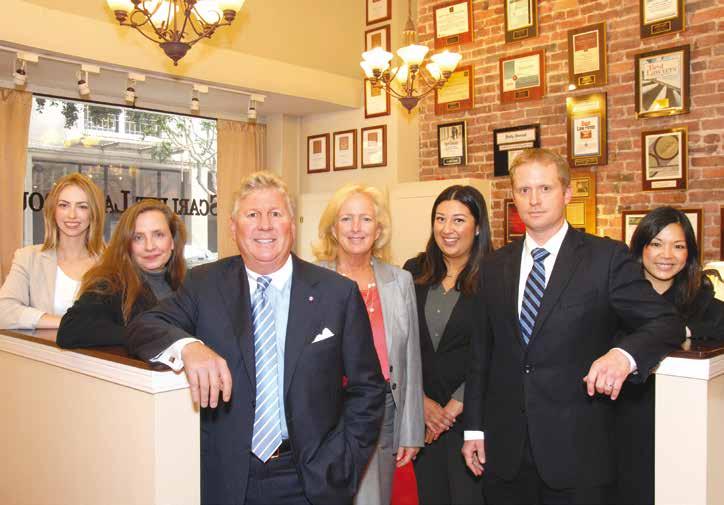
With his experienced team of attorneys and support staff, founder Randall Scarlett has built a highly selective plaintiffs’ firm that is dedicated to improving the quality of life of its injured clients. “I live to assist people who have sustained traumatic brain injury or other catastrophic harms,” Scarlett says. “There is simply no greater calling than being able to work in a field where you can help people obtain the treatment they so desperately need.”
To that end, Scarlett and his firm strive to achieve maximum recovery for their clients, while also providing them with the best medical experts available. “As a firm, we ensure that our clients receive both
the litigation support they need and the cutting-edge medical treatments that can help them regain independence,” Scarlett notes.
Scarlett’s record-setting verdicts for clients with traumatic brain injuries include $10.6 million for a 31-year-old man, $49 million for a 23-year-old man, $26 million for a 7-year-old, and $22.8 million for a 52-year-old woman. In addition, his firm regularly obtains eight-figure verdicts for clients who have endured spinal cord injuries, automobile accidents, big rig trucking accidents, birth injuries, and wrongful death.
Most recently, Scarlett secured an $18.6 million consolidated case jury verdict in February 2014 on behalf of the family of a woman who died as a result of the negligence of a trucking company and the dangerous condition of a roadway in Monterey, Calif. The jury awarded $9.4 million to Scarlett’s clients, which ranks as
one of the highest wrongful death verdicts rendered in recent years in the Monterey County Superior Court.
“Having successfully tried and resolved cases for decades, we’re prepared and willing to take cases to trial when offers of settlement are inadequate, and I think that’s ultimately what sets us apart from many other personal injury law firms,” observes Scarlett, who is a Diplomate of the American Board of Professional Liability Attorneys.
In 2015, Mr. Scarlett obtained a $13 million jury verdict for the family of a one year old baby who suffered permanent injuries when a North Carolina Hospital failed to diagnose and properly treat bacterial meningitis that left the child with severe neurological damage. Then, just a month later, Scarlett secured an $11 million settlement for a 28-year-old Iraq War veteran who was struck by a vehicle in a crosswalk, rendering her brain damaged.